Music is the universal language
“Glory to God in the highest heaven, and on earth peace to those on whom his favor rests.” - Luke 2:14
Premier Guitar
Sweetwater CEO Mike Clem Talks Leadership and Problem-Solving at the Music Retailer
Sweetwater CEO Mike Clem recently stopped by the Know Your Gear podcast for a look inside how one of the largest music gear companies operates.
In the conversation, Clem talks about the ways Sweetwater listens to customers, employees, and the broader market when making decisions. He shares how the company responds to challenges in the industry, from supply chain issues to evolving technology, and how those challenges shape everyday operations.
Clem also touches on leadership and supporting employees in their roles, offering insight into how a large company keeps everyone moving in the same direction without losing sight of its culture. It’s a detailed look behind the scenes, full of takeaways for musicians, gear enthusiasts, and anyone curious about running a growing business in a competitive industry.
You check out the full interview above.
BOSS Introduces PX-1 Plugout FX
BOSS introduces the PX-1 Plugout FX, an innovative hardware platform that captures the timeless BOSS compact pedal experience in one versatile pedal.This convertible stompbox holds multiple authentic effect recreations from the historic BOSS effects lineup, providing endless fuel for every creative journey. Sixteen effects are included with purchase, and more can be added over time with the BOSS Effect Loader app for iOS and Android devices.
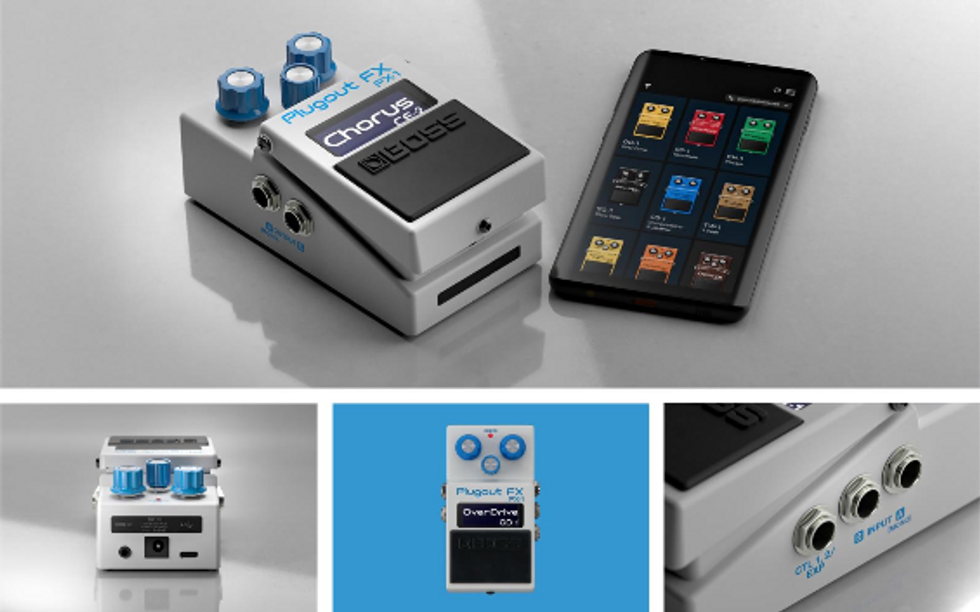
Since 1977, BOSS compact pedals have inspired generations of musicians around the world. Over 140 unique models have been produced, over 19 million units have been sold, and many have remained in non-stop production for decades. From vintage classics and go-to workhorses to rare and specialty effects, the PX-1 unlocks the diverse BOSS compact pedal range within a single stompbox.
Backed by newly developed BOSS algorithms, each effect in the PX-1 delivers the genuine sound and response of the pedal it’s based on. Every detail is modeled with stunning accuracy, thanks to a powerful DSP engine dedicated to recreating the sound of a single effect at a time. Users can dial in tones fast with the familiar BOSS knob interface, supported by an onboard display for current parameters and internal settings.
The PX-1 offers external control with one or two footswitches or an expression pedal. There’s a Swap function to switch between two effects, and nearly any parameter can be assigned for real-time expressive control while performing. Stereo I/O provides flexible connectivity and enhanced sound for models with stereo operation, while tap tempo and MIDI clock support are provided for time-based effects.
An Ever-Expanding Library
The PX-1 comes with 16 unique effects, including eight permanently installed “1” models and eight that can be loaded into the pedal’s eight user memories.Many more PX-1 effects will be added over time, and each new effect will be available with a low-cost Model Pass within the BOSS Effect Loader app.
Included effects:
OD-1 Over Drive
SP-1 Spectrum
PH-1 Phaser
SG-1 Slow Gear
CS-1 Compression Sustainer
TW-1 T Wah
SD-1 SUPER OverDrive
DS-1 Distortion
CE-2 Chorus
BF-2 Flanger
PN-2 Tremolo/Pan
OC-2 Octave
PS-2 Digital Pitch Shifter/Delay
VB-2 Vibrato
DD-2 Digital Delay
DF-2 SUPER Feedbacker & Distortion
Roland Cloud Ultimate Membership Included
The same PX-1 effects are also available for computer music production with the BOSS Effects Pedals plug-in on Roland Cloud, and six months of Roland Cloud Ultimate membership comes with the pedal. This provides complete access to the full BOSS Effects Pedals library, JC-120 Jazz Chorus and RE-201 Space Echo plug-ins, and many other powerful creative tools.
Availability & Pricing
The BOSS PX-1 Plugout FX will be available in September for $249.99 USD.
Many more PX-1 effects will be added over time, and each new effect will be available with a low-cost Model Pass within the BOSS Effect Loader app.
Bad Cat Introduces the Ocelot — Small Amp. Big Attitude. Total Control.
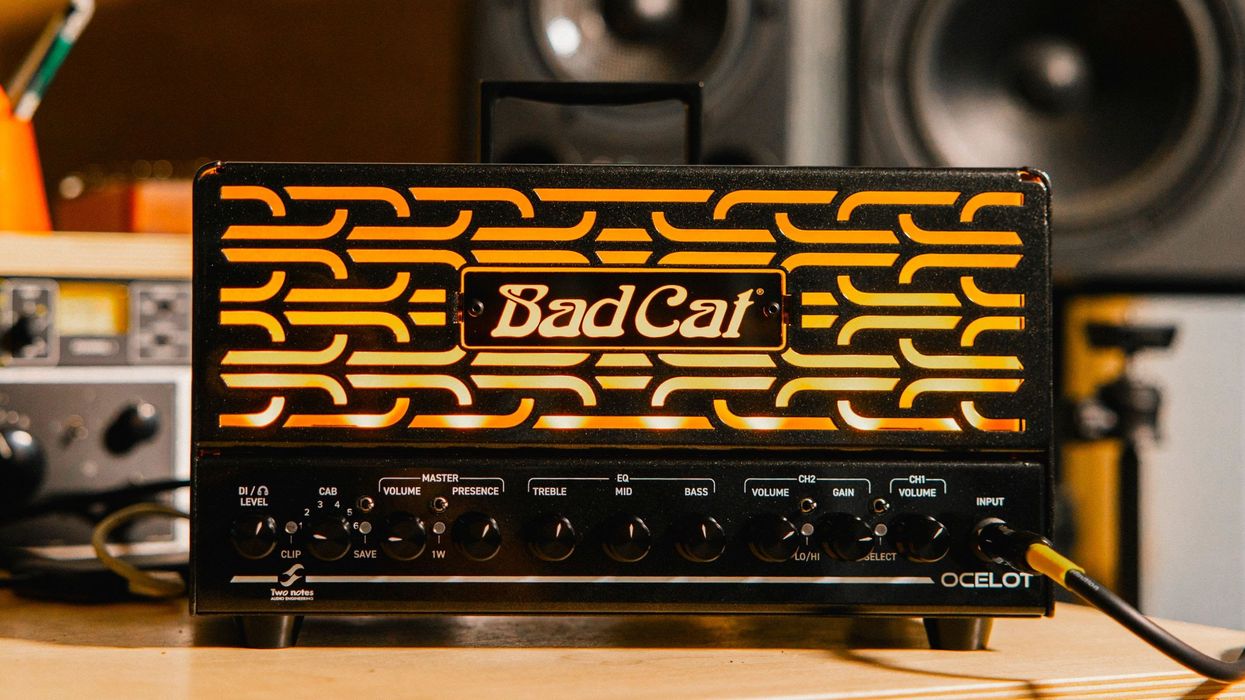
Bad Cat Amplifiers is proud to announce the release of the Bad Cat Ocelot, an all-new compact tube amplifier designed for modern players who demand premium tone, total flexibility, and uncompromising quality—in a small 12 lbs. package.
The Ocelot brings together the warmth of pure analog tube circuitry with advanced digital features, redefining what’s possible in a small-format amp. Whether you're recording at home, gigging, or practicing silently with headphones, the Ocelot adapts to your environment without ever compromising your tone.
Compact Size, Massive Flexibility
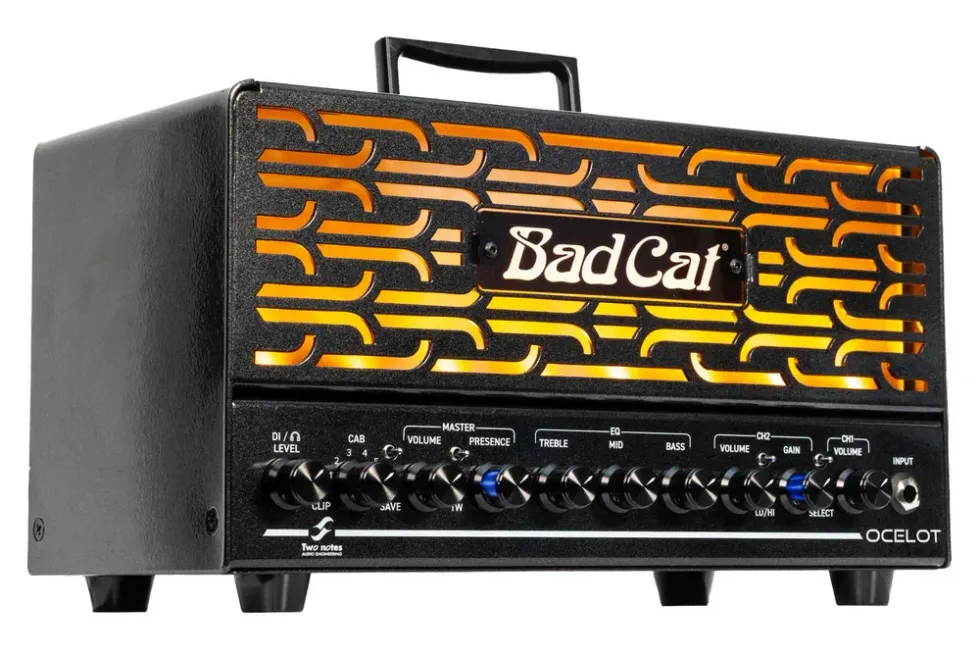
Equipped with two independent channels and two distinct gain modes, the Ocelot delivers a wide sonic spectrum:
- Channel 1 features sparkling, high-headroom cleans with the ability to nudge into rich edge-of-breakup tones via a Hi/Lo mode switch.
- Channel 2 brings tight, punchy crunch and full-bodied, high-gain saturation—with articulate response and massive sustain.
Each channel has its own volume control, and the amp includes shared Treble, Mid, Bass, and Presence EQ for easy tone shaping.
Studio-Ready Features, Stage-Proven Design
The Ocelot’s real power lies in its flexibility:
- Two notes Torpedo DynIR™ integration with six onboard virtual cabinet presets from the official Bad Cat DynIR Pack.
- Selectable Power Modes – Choose between 20W for full punch or 1W for quiet playing.
- XLR and Headphone Outs – For silent practice or direct-to-DAW recording, complete with Cab Sim and adjustable Cab Level control.
- Buffered Effects Loop – Keep your pedals sounding pristine and punchy.
- USB-C Port – For firmware updates and remote editing via Two notes Torpedo Remote software.
- MIDI Control – Full MIDI implementation for switching channels, modes, and cab presets on the fly.
And thanks to its internal speaker load, you can use the Ocelot without an external cabinet—perfect for late-night jams or tracking in a silent setup.
Built for Real Life
Crafted with a heavy-duty aluminum chassis and powered by a custom Bad Cat transformer set, the Ocelot is a rugged, reliable, and road-ready package. It includes a two-button footswitch and is backed by Bad Cat’s 5-year limited warranty.
Specifications
- Designed in the USA by Bad Cat Amps
- 20 Watts, switchable to 1 Watt
- 2 x EL84 Power Tubes
- 3 x 12AX7 Preamp Tubes
- Two Channels with Hi/Lo Mode
- Treble, Mid, Bass, and Presence Controls
- Master Volume
- Two notes Torpedo DynIR Integration (6 presets)
- Cabinet Simulated XLR Output
- Cabinet Simulated Headphone Output
- MIDI Input
- Buffered Effects Loop
- 8, 16 Ohm Speaker Outs
- Heavy Duty Aluminum Chassis
- USB-C Connectivity
- Footswitch Included
- 5-Year Limited Warranty
- Street Price: $1,299.99
The Bad Cat Ocelot: Go anywhere. Play anything. Available August 28, 2025.
For more information or to place an order, visit www.badcatamps.com
GEAR Finds: Stompboxes
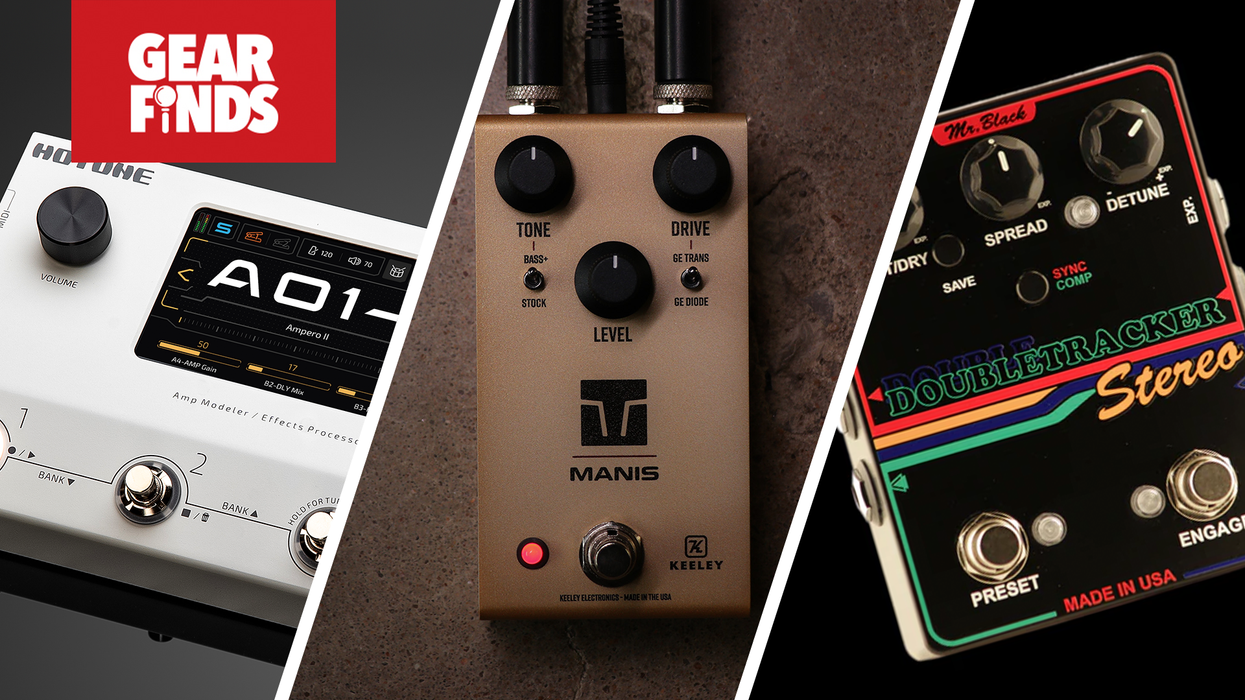
Discover the magic of tone with the latest pedals! From the versatile Brothers AM to the warm Keeley Manis Overdrive, each offers unique sonic possibilities. Ready to elevate your sound? Dive into the Eventide H90's powerhouse effects or the compact CHO-mini's rich chorus. Which pedal will inspire your next masterpiece?
CHASE BLISS Brothers AM
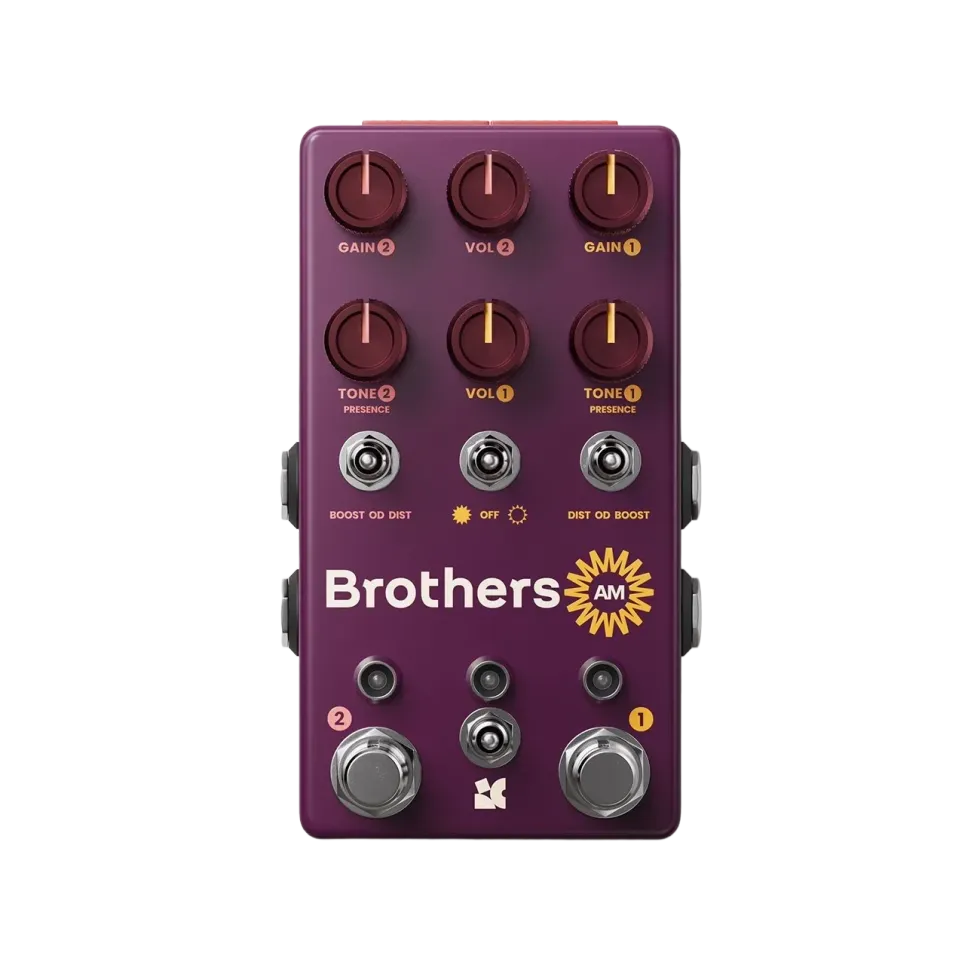
A faithful tribute to the Analog Man King of Tone, the Brothers AM offers dual multi‑mode gain channels—boost, overdrive, or distortion—with intuitive controls, live tweakability, and four onboard custom presets. It adds a bonus treble‑booster circuit inspired by the Beano Boost, giving you extra bite and clarity. Fully MIDI, expression, and CV‑controllable, this pedal lets you save tones and stack effects while preserving the warm, transparent character of the original.
$399 street
KEELEY Manis Overdrive
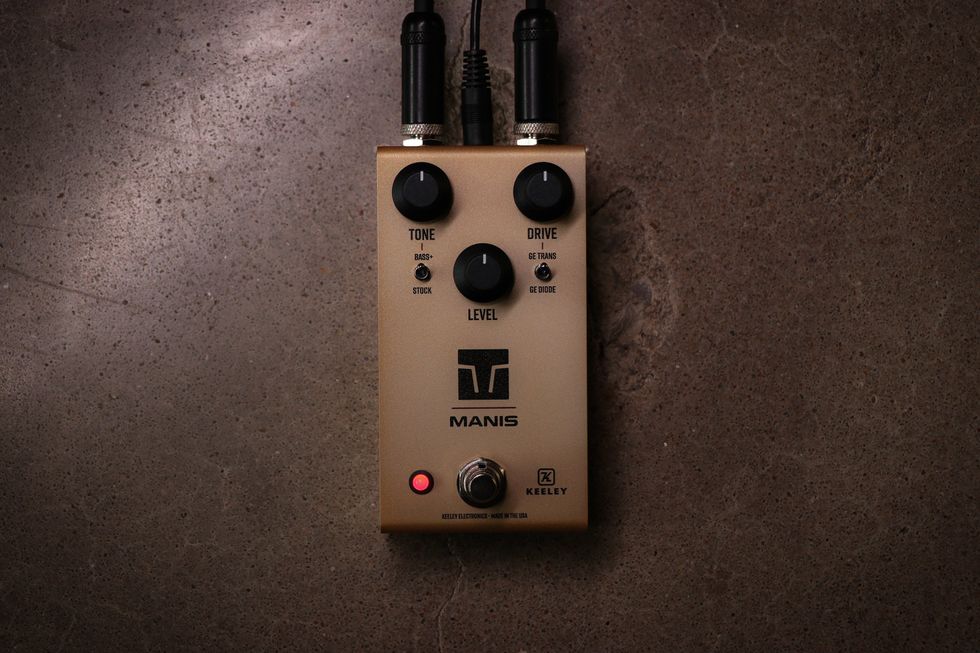
The Keeley MANIS Overdrive is a bold evolution of the mythical transparent drive, blending NOS germanium transistors and diodes for unmatched warmth, compression, and grit. With switchable voicings and dynamic touch response, it’s a tone-sculpting weapon built for players who demand both clarity and rich harmonic character in one pedal.
$199 street
EVENTIDE H90 Harmonizer
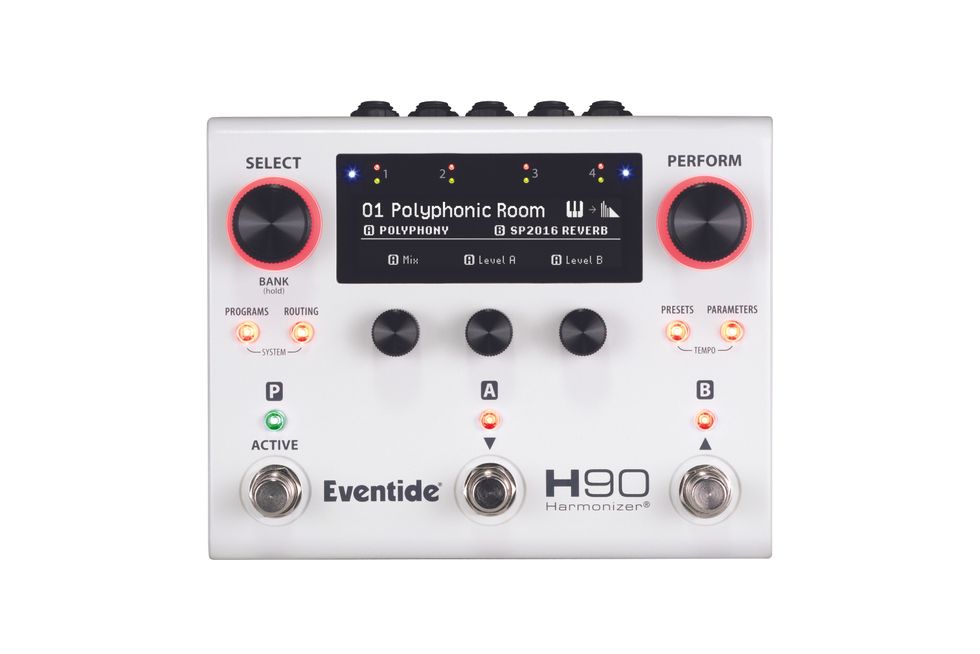
Eventide’s flagship H90 Harmonizer is a powerhouse multi-effects pedal. It features 70 effect algorithms, including reverb, delay, pitch shifting, modulation, and distortion, plus hundreds of curated programs. With comprehensive I/O and flexible routing, the H90 is built to be the heart of your rig, on stage or in the studio.
$899 street
NUX Amp Academy Stomp
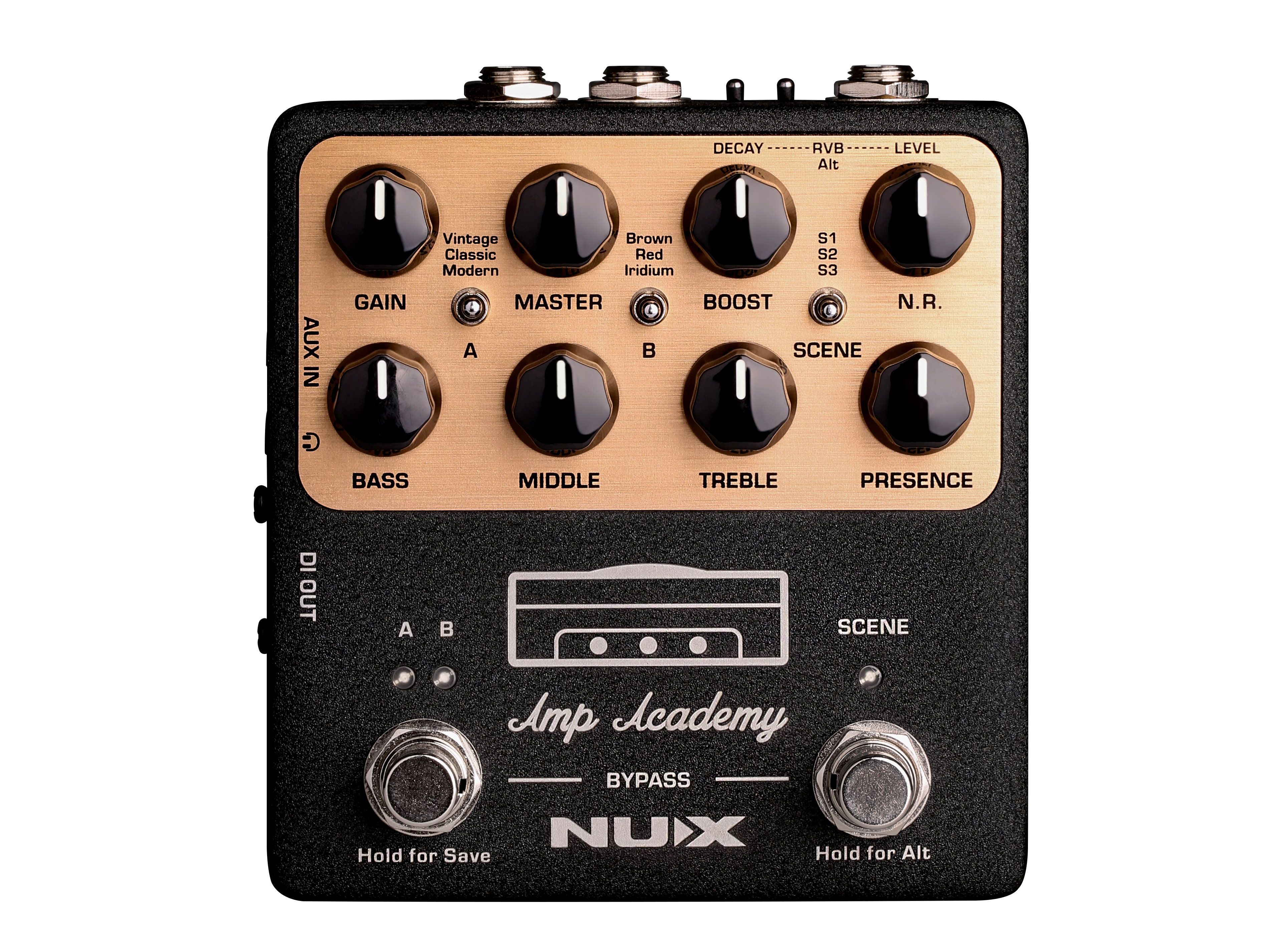
The Amp Academy Stomp is the latest in amp modeling from NUX. Included are several legacy amps, effects, Bluetooth with an app, workflow features, and more. Most importantly, the Amp Academy Stomp includes Image, which loads NAM profiles into the Amp Academy Stomp and, with black-box algorithms, accurately reproduces the dynamics and responsiveness of any amp profile loaded into the pedal.
$299 street
NOBELS CHO-mini
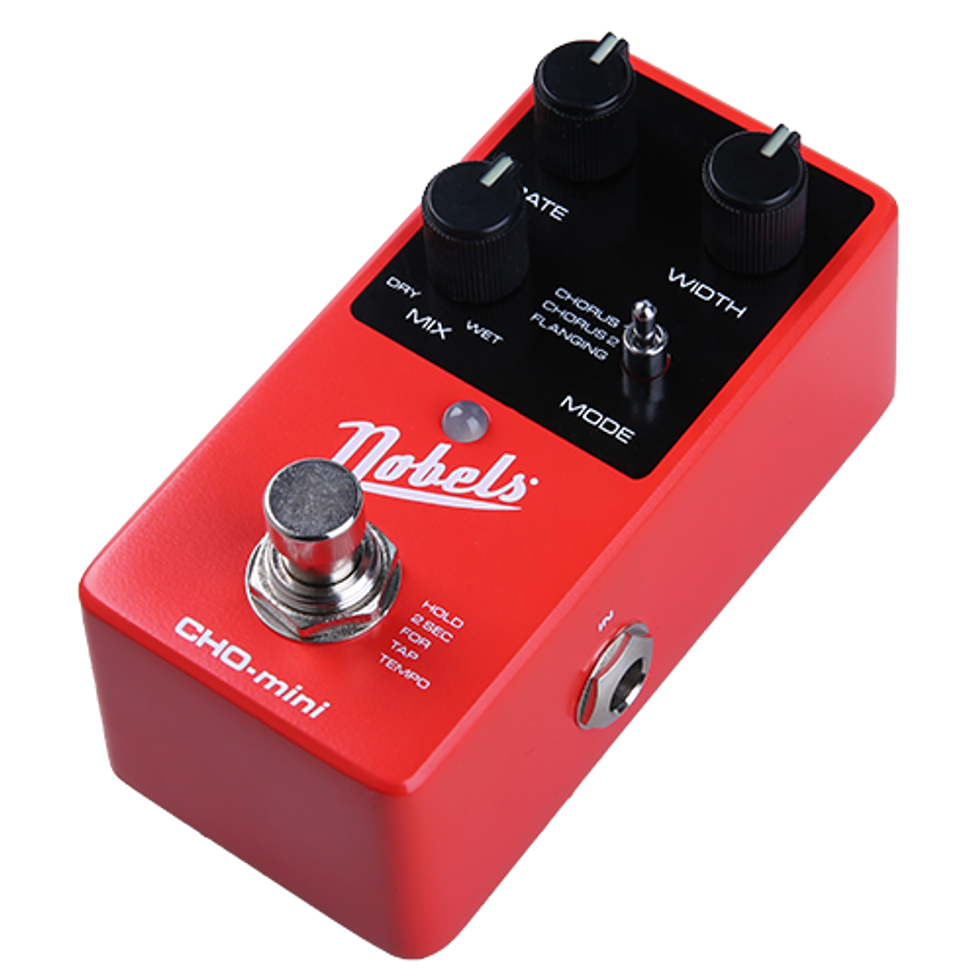
The pocket-sized and feature-packed CHO-mini pedal delivers an outstanding selection of chorus tones at a budget-friendly price. With a selection of three curated and timeless chorus effects, the CHO-mini delivers a wealth of sonic possibilities in mono or spacious stereo imaging. Includes tap-tempo, true or buffered bypass, metal housing. Available from Osiamo.
$99 street
FUHRMAN Echoes
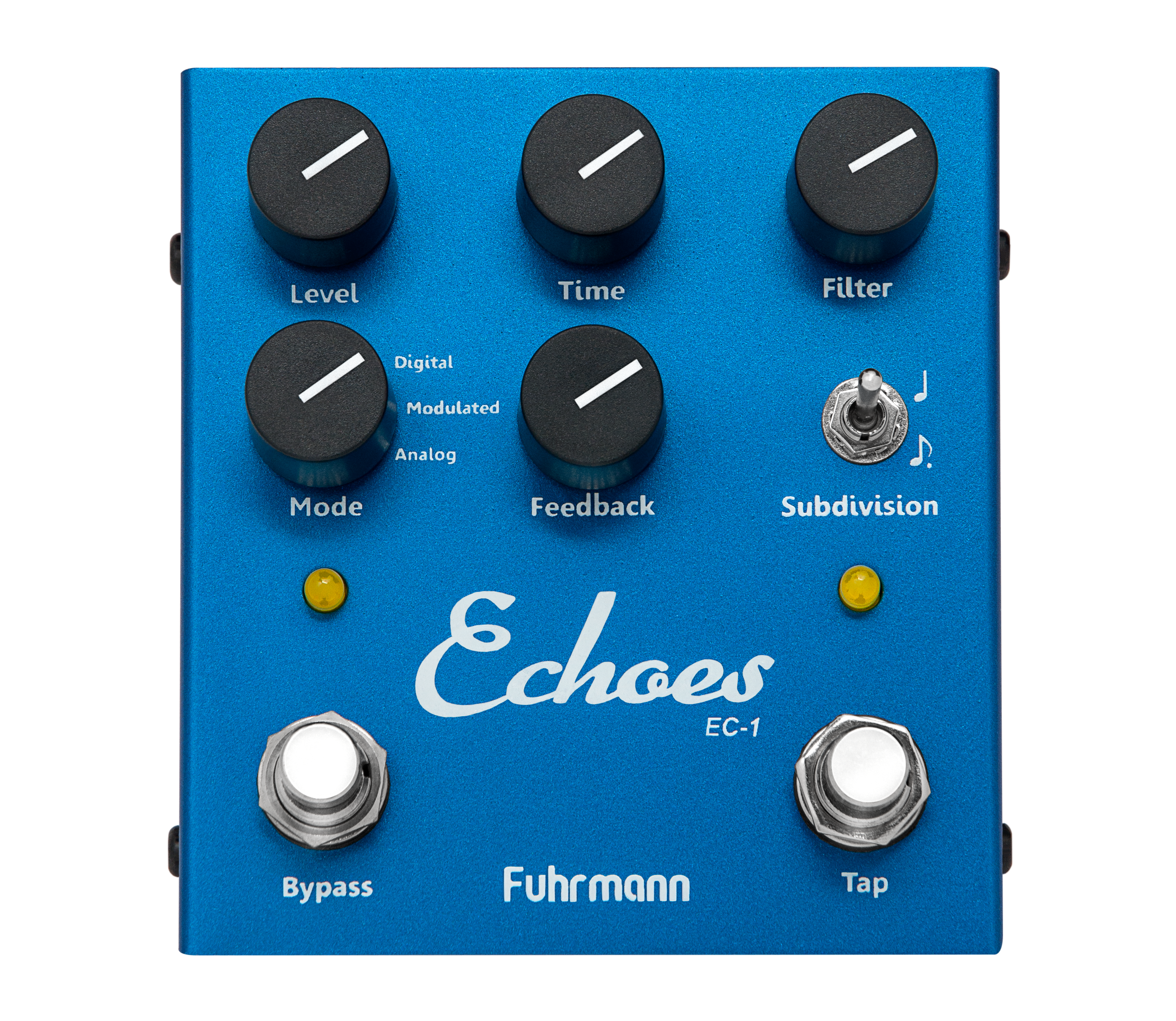
The Fuhrmann Echoes pedal is a versatile delay unit, offering digital, modulated, and analog modes. It provides clear, modulated, or degrading (analog-like) delay repetitions, adjustable with a low-pass-filter control. Featuring tap tempo and two rhythmic subdivisions, this compact pedal delivers up when one delay is not enough.
$180 street
NOISE ENGINEERING Batverb
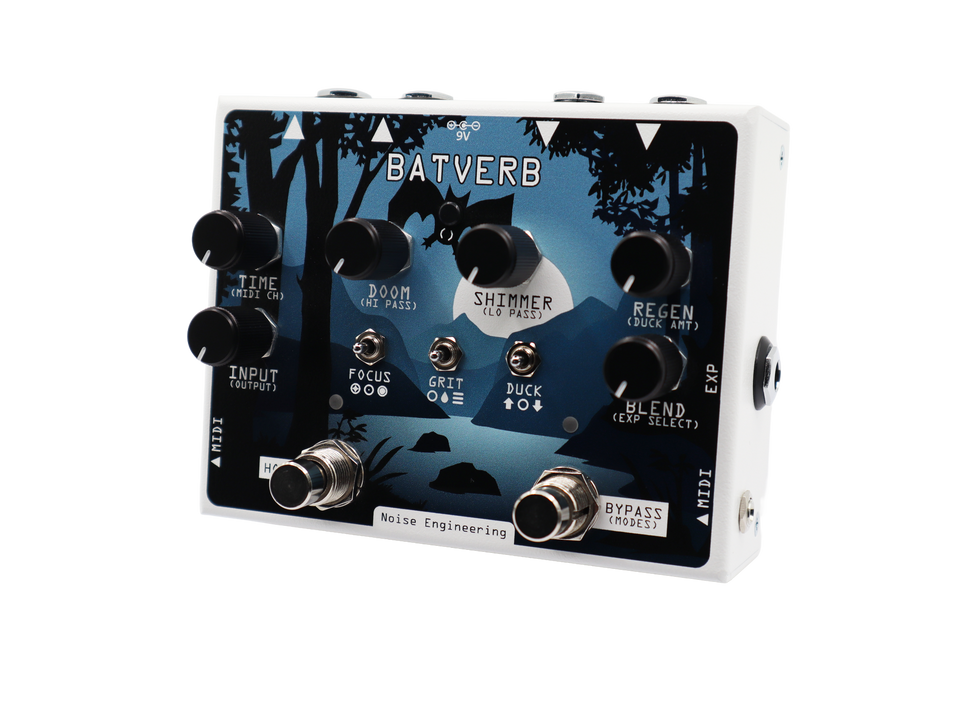
Batverb is the stereo reverb that dreams are made of. Less of a room simulator and more of a tail-generating pedal, Batverb is an instrument in its own right. Batverb sings in any signal chain, with dedicated controls for suboctaves and overtones, saturation, ducking behavior, and more.
$499 street
HOTONE Ampero II
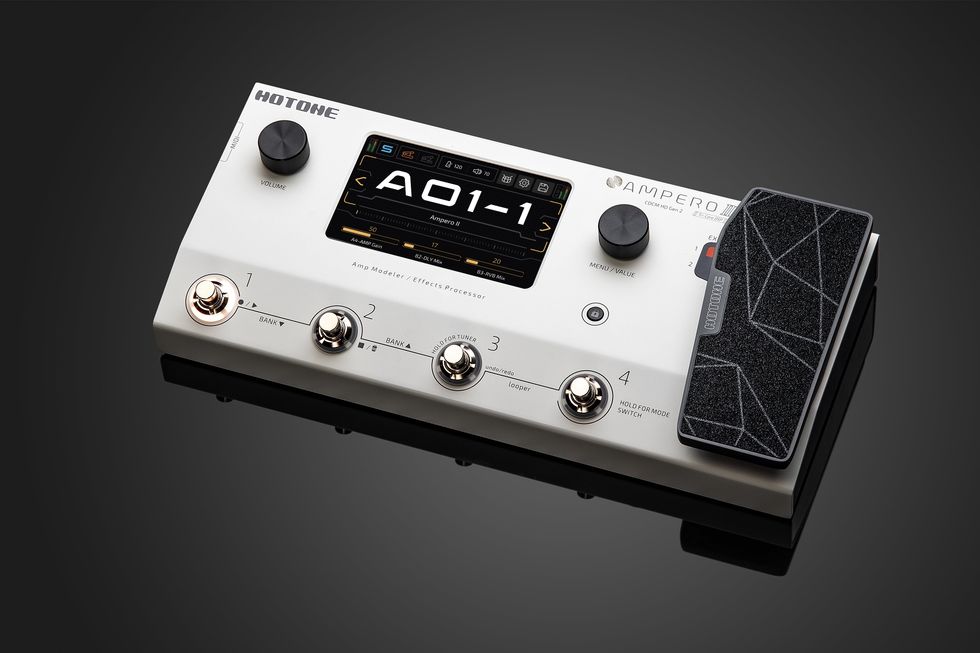
The Ampero II is the latest addition to the Ampero series, a second-generation multi-effects processor that brilliantly combines the iconic stage control of the original Ampero with the power of a new triple-core digital audio processing platform. Plus, a larger, sharper 5-inch dynamic touchscreen and newly designed system UI for smoother, and more intuitive interaction. All while maintaining the compact and lightweight design of the Ampero Series.
$599 street
FUHRMAN Stellar Stereo Reverb

The Fuhrmann Stellar Stereo Reverb pedal delivers a broad range of reverbs, from short early reflections to long, floating tails. Users can seamlessly transition between nine stored reverb scenes with no noticeable delay. Intuitive controls allow for precise adjustments, making it a powerful and user-friendly addition for diverse sonic needs.
$250 street
MR. BLACK DoubleTracker Stereo
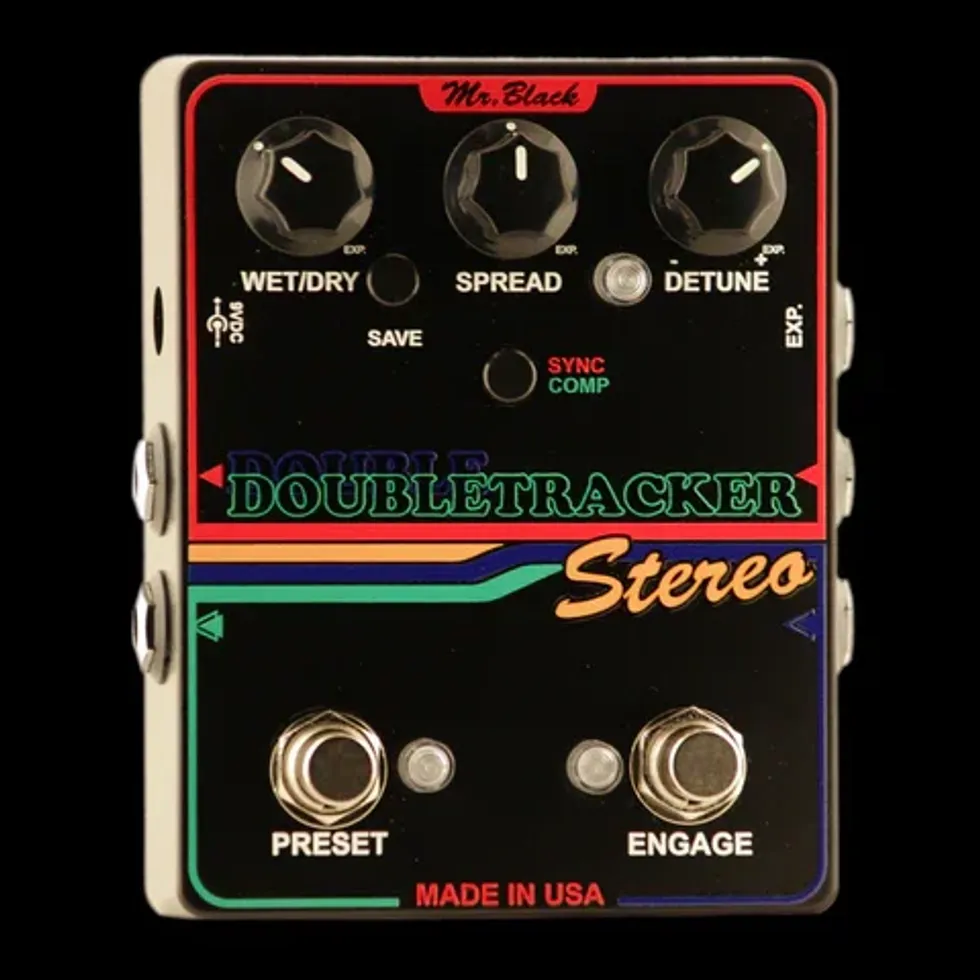
The DoubleTracker Stereo delivers lush, organic stereo doubling with adjustable delay, pitch, and spread. Featuring dual isolated paths, intuitive controls, and unique SYNC/COMP modes, it adds depth and dimension to any instrument—perfect for guitar, bass, keys, vocals, and studio work. It’s not chorus. It’s Double Tracking.
$279 street
ROCK N ROLL RELICS Stinger Overdrive
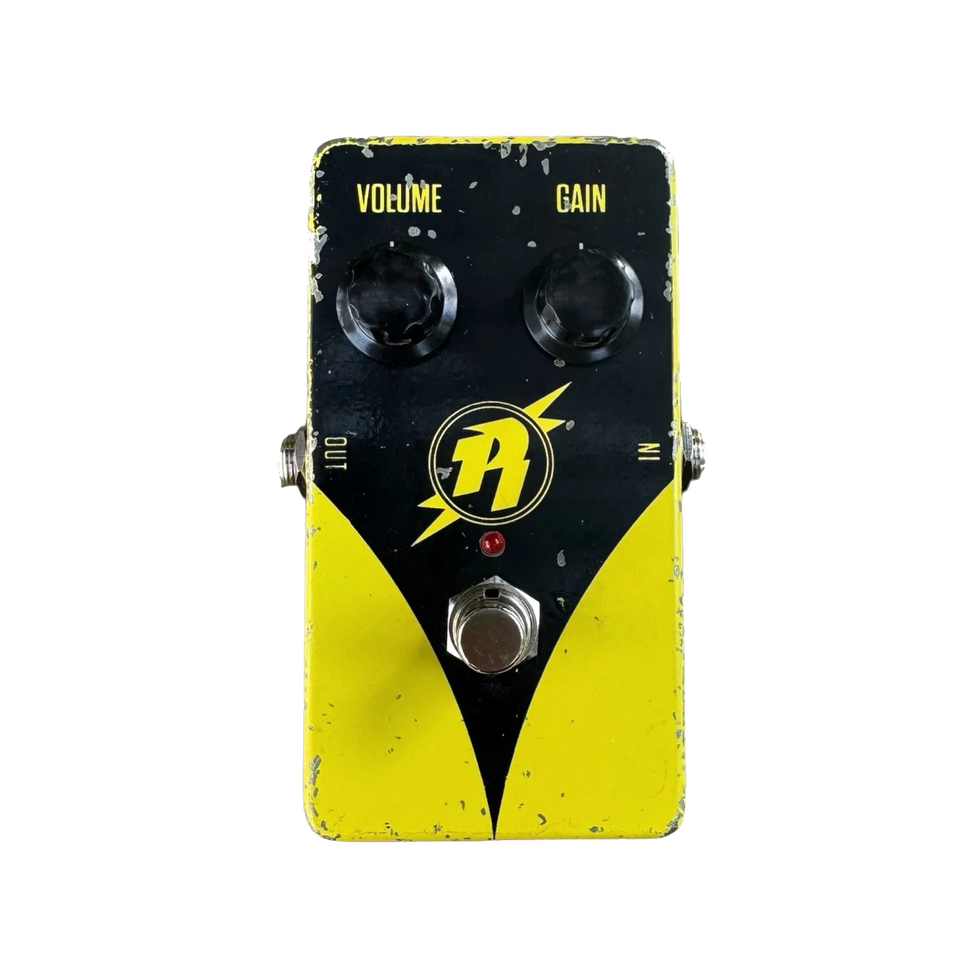
The Rock N Roll Relics Stinger overdrive has all the mojo of classic, yellow drive pedals, but with tonal refinements to bring it to the modern age. We use NOS construction, as you’ll come to expect with the Stinger Series, which gives it that authentic, ear-pleasing tone we all want.
$289 street
EMG Pickups Announces All New E-Series Bass Pickups
EMG Pickups introduces the all-new E-Series lineof active bass pickups. Featuring the commonly used slim soapbar cap design, the E-Series pickups unlock a multitude of bass models for simple, drop-in EMG upgrades.
Unlike any other EMG design, the E-Series pickups feature wide aperture coils withceramic magnets. This potent combination delivers powerful low end while retaining thecutting articulation that the modern bass player requires. Designed with versatility inmind, the E-Series can excel in a wide range of genres and play styles and areavailable in 4, 5, and 6 string sizes. Just like all EMG active pickups, the E-Series arefree from hum and buzz and include solderless wiring kits for DIY installation.
For further tonal shaping, the E-Series pickups are compatible with EMG’s wide rangeof bass EQ’s and accessories, so the possibilities are virtually endless.Unlock the potential of your bass with the EMG E-Series pickups.
Individual E-Series pickups start at $109.00, with sets starting at $209.00.
EMG E4W
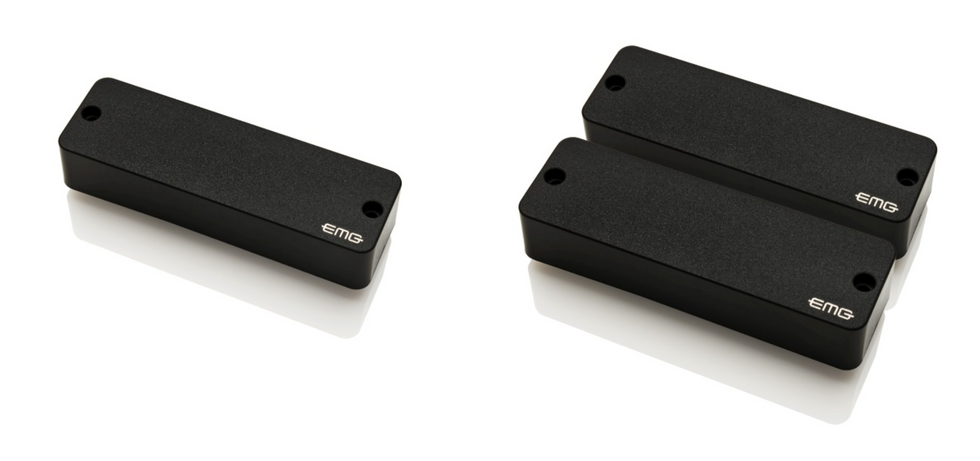
https://www.emgpickups.com/bass/e-series/4-string-e-series.html
EMG E5W
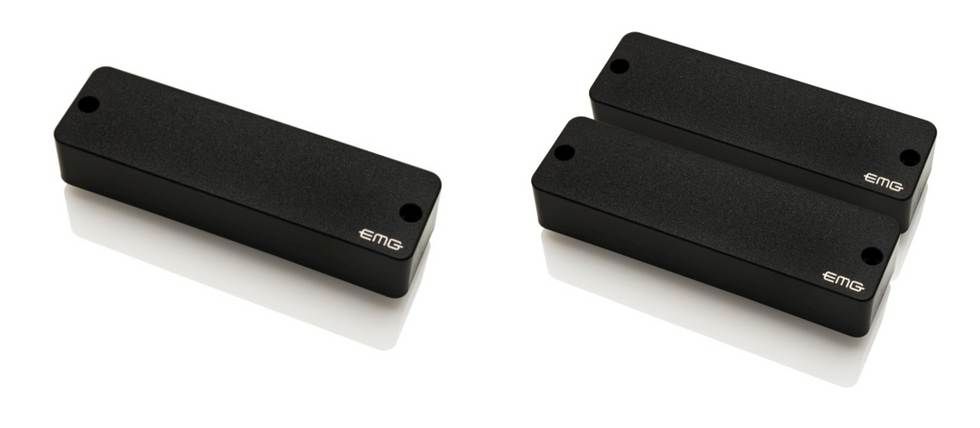
https://www.emgpickups.com/bass/e-series/5-string-e-series.html
EMG E6W
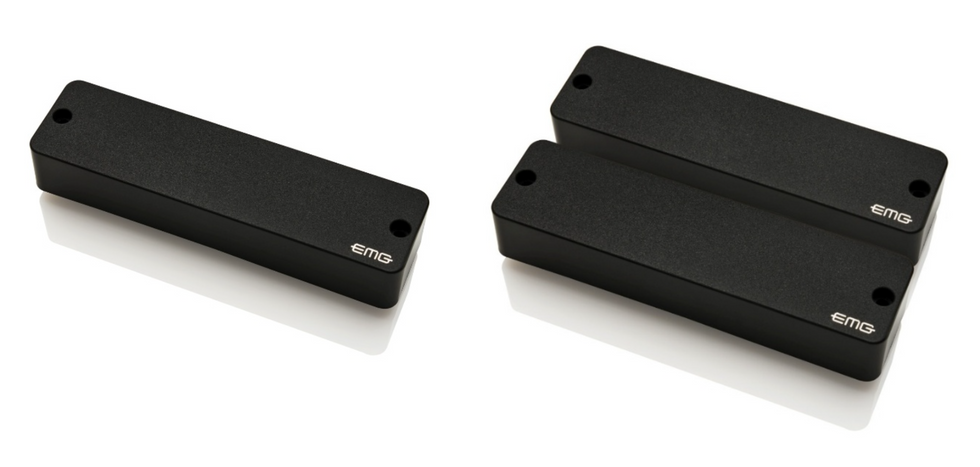
https://www.emgpickups.com/bass/e-series/6-string-e-series.html
Strymon EC-1 Review
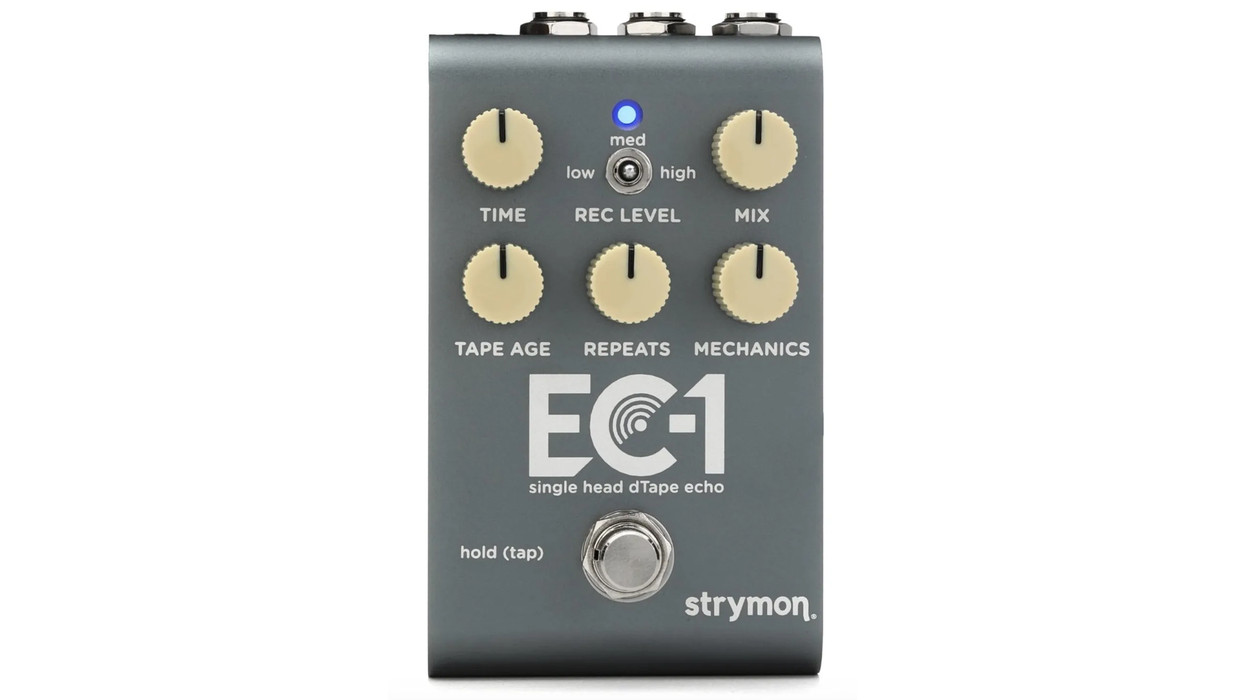
Though they are maligned for their fragility, I’d put the Echoplex tape echo up there among the greatest pieces of musical instrument design. They are totally inspiring tools—certainly in terms of their sound, but also for the mechanical means by which one manipulates and mangles tones. These days, several digital sound designers replicate the Echoplex’s warm, hazy, and mysterious sonic fingerprint with startlingly good results. But just like real fingerprints, the sonic signature of every Echoplex is a little bit different, and one of the most interesting facets of the Strymon EC-1 design is the departure point they used for inspiration.
Rather than emulate the familiar and relatively common solid-state EP-3, Strymon used a tube-preamp-driven EP-2 as a launch pad—except that Strymon’s EP-2 was heavily modified by legendary amp man Cesar Diaz. In Strymon’s estimation, Diaz’ modifications added some characteristics of an EP-3 preamp to the EP-2 formula. In my experience (I’ve played EP-2s and EP-3s side by side and used the latter for comparison in this review) that could mean extra headroom or, in the worst cases, comparative brittleness. Strymon, for their part, says Diaz’ mods resulted in a warmer sort of EP-2 sound. Regardless of their design intent, the EC-1 sounds fantastic in many of the ways a great Echoplex might. The haze and degradation in each repeat sound and behave much like magnetic tape, shaving off high and high-mid spectrum detail as the echoes recede, and adding the dreamy, blurry ambience of a Gerhard Richter painting. But the EC-1 also does sound truly warmer than some of its rivals.
Punch and Foggy
The EC-1 features two preamp modes. The default or “amber” mode emulates the modded preamp Strymon discovered in their EP-2. Somewhat paradoxically for a pedal that excels at simulating tape-signal degradation, it gives the pedal a punchy, airy ambience that can make other delays sound flat and one-dimensional. You can also add up to 6dB of boost, and one thing is certain; at these hotter settings the EC-1 is not a tape-delay emulation that will go missing in an ensemble performance. The second “green” preamp mode emulates a stock EP-2, and while it sounded awesome, it felt a little less fun and dimensional—at least after ripping away with the default mode. Both modes sound great with drive and distortion, however. And in the amber mode, the extra detail you hear also makes it feel more sensitive to picking and input dynamics.
As is obligatory in most Echoplex emulations, the EC-1 offers excellent approximations of tape warble, tape wear, and recording input level effects. There is also stereo and MIDI functionality. In terms of price, the EC-1 inhabits an interesting position in a market full of top-performing Echoplex emulators. At $279, it’s $120 less than Universal Audio’s feature-rich Starlight Echo Station, $100 less than Strymon’s own El Capistan, and 80 bucks less than the Catalinbread Belle Epoch Deluxe. There are also excellent options in less expensive ranges, like the standard Belle Epoch ($209), Dunlop’s Echoplex pedal ($199), and UA’s Orion ($169). Though some of them offer more in terms of options and versatility, I’m not sure any of them can better the sounds of the EC-1. And certainly, the EC-1’s default mode offers a unique and exciting twist on EP-2 sounds that, while not vintage-correct in a technical sense, may offer more utility as a delay than the most perfectly executed Echoplex ever could.
Adam Miller Rig Rundown
The prolific Australian guitarist brought his mastery to east Nashville, where we got a look at the gear he’s trusting overseas.
Adam Miller has been compared to plenty of his most sacred influences—Tommy Emmanuel, Chet Atkins, Charlie Hunter, Bill Frissell—but he’s certainly carved a path of his own. This year alone, he’s released three records and undertook a U.S. tour to bring his delightful mix of jazz, groove, and beyond to eager listeners.
Before his show at the Underdog in east Nashville, Miller took some time to show PG’s Chris Kies around his trusted tools for international touring, including a gorgeous custom Huber electric, a Collings acoustic, and some key items on loan.
Calling a Huber
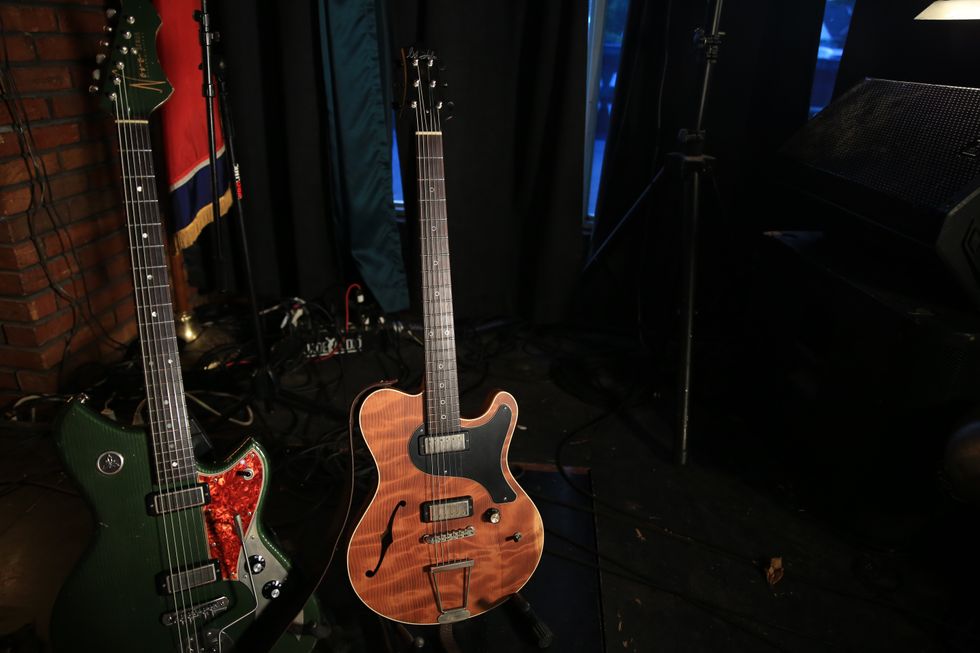
This custom-built Huber electric, by German luthier Nik Huber, was crafted over the last five years, working in elements of Miller’s previous Huber and several other designs. It has a heavily chambered mahogany back and redwood top, bolt-on maple neck, rosewood fretboard, trapeze tailpiece, and nylon saddles, plus Kloppmann Electrics mini humbuckers and a single 250k volume pot, which rolls off for a jazzy archtop sound. Miller strings it with D’Addario NYXLs (.011–.049s).
Borrowed Bari
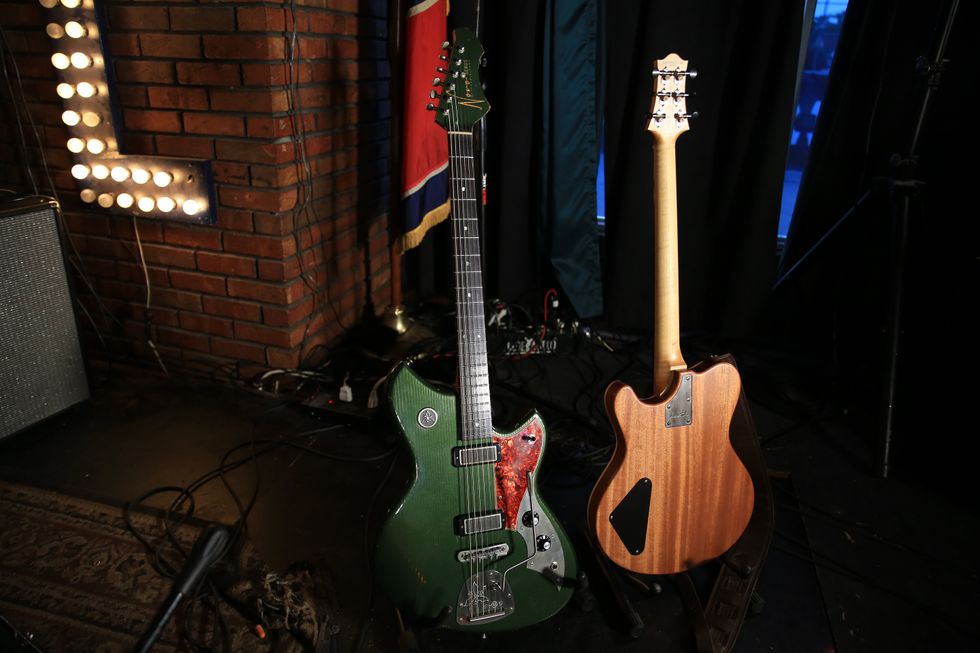
Since Miller can’t bring all his favorite instruments on tour, he often borrows guitars from local friends and fans on tour, like this baritone Novo Serus J.
Collings Calling
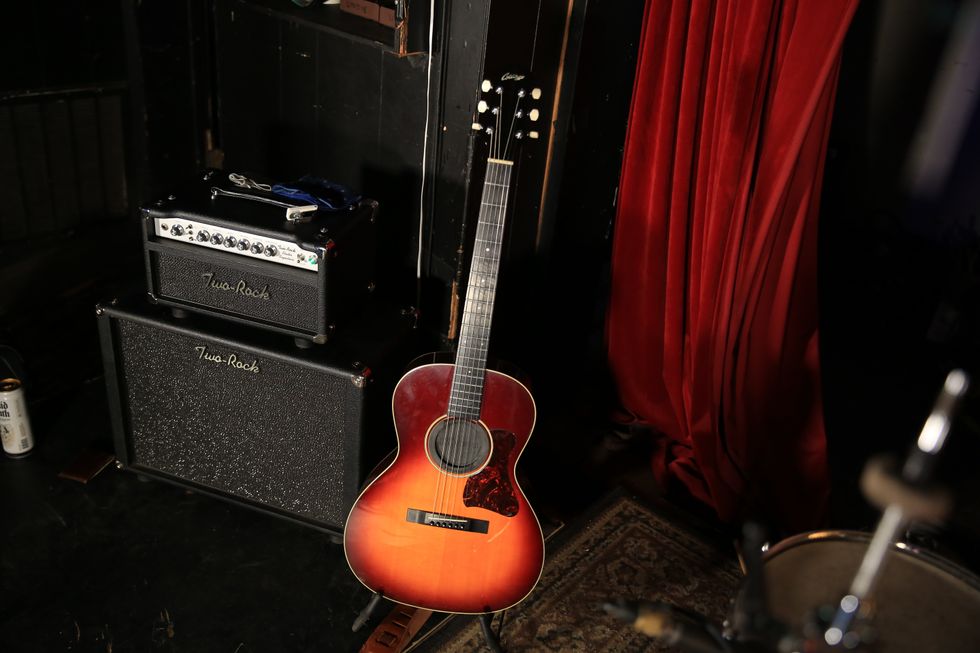
Miller bought this Collings acoustic at Gladesville Guitar Factory, just outside Sydney, about 10 years ago. He runs it with a Seymour Duncan Wavelength duo pickup system, but swapped out the kit’s undersaddle piece for soundboard transducers and modified “the circuit so they’re at a crossover, so you’re only hearing the bottom end of them and all the top end’s coming from the condenser mic.” He uses D’Addario Nickel Bronze (.012–0.53s) on his acoustic.
Can I Bum a Studio Sig?
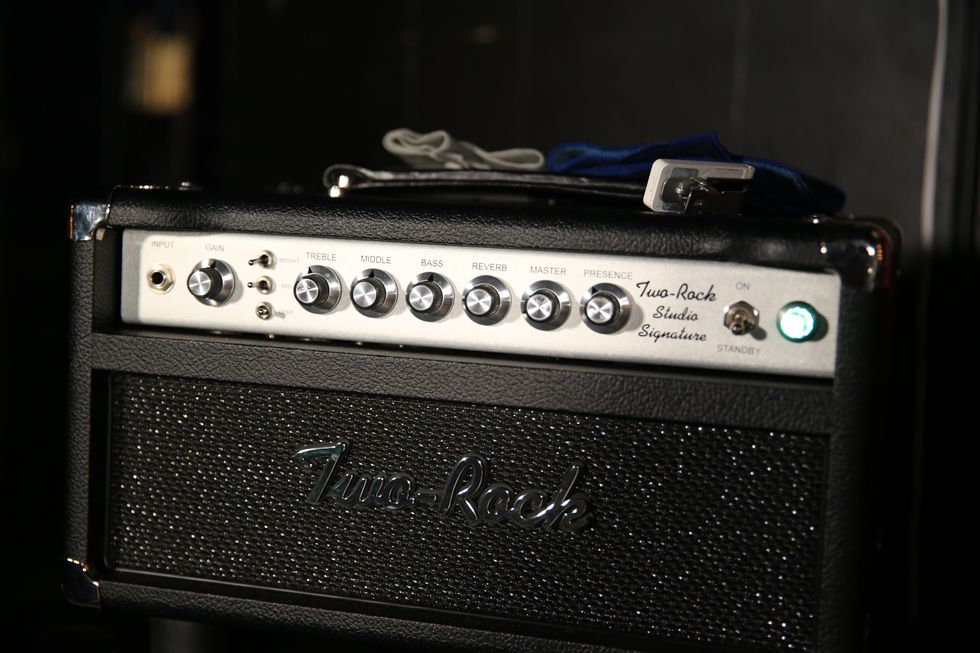
Miller has been a Two-Rock devotee since 2007, and on one of his first trips to the U.S., he visited the factory and picked one up. He doesn’t travel with his unit, so he borrowed this one from Nashville legend Cory Congilio. For Miller, an amp is the soundboard for an electric guitar; if he doesn’t have a Two-Rock, he struggles.
Adam Miller’s Pedalboard
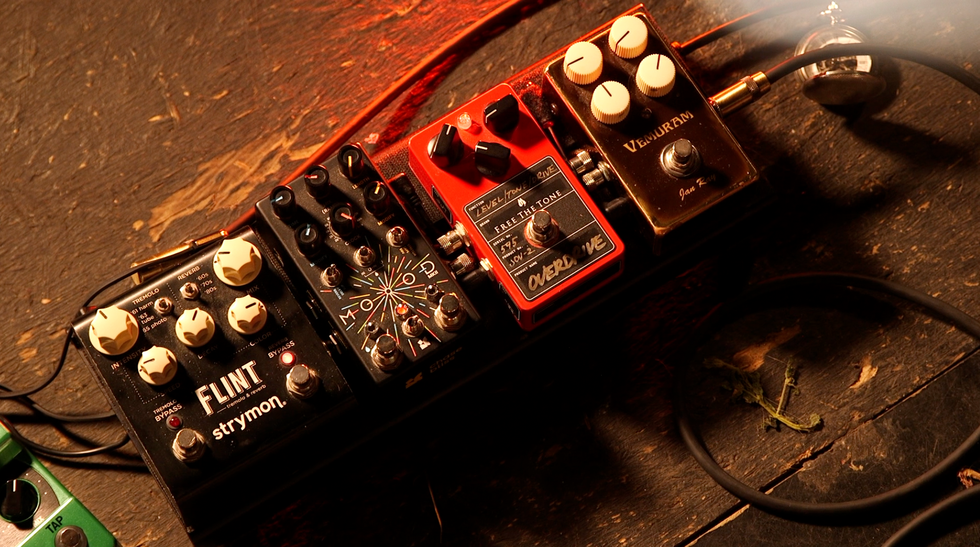
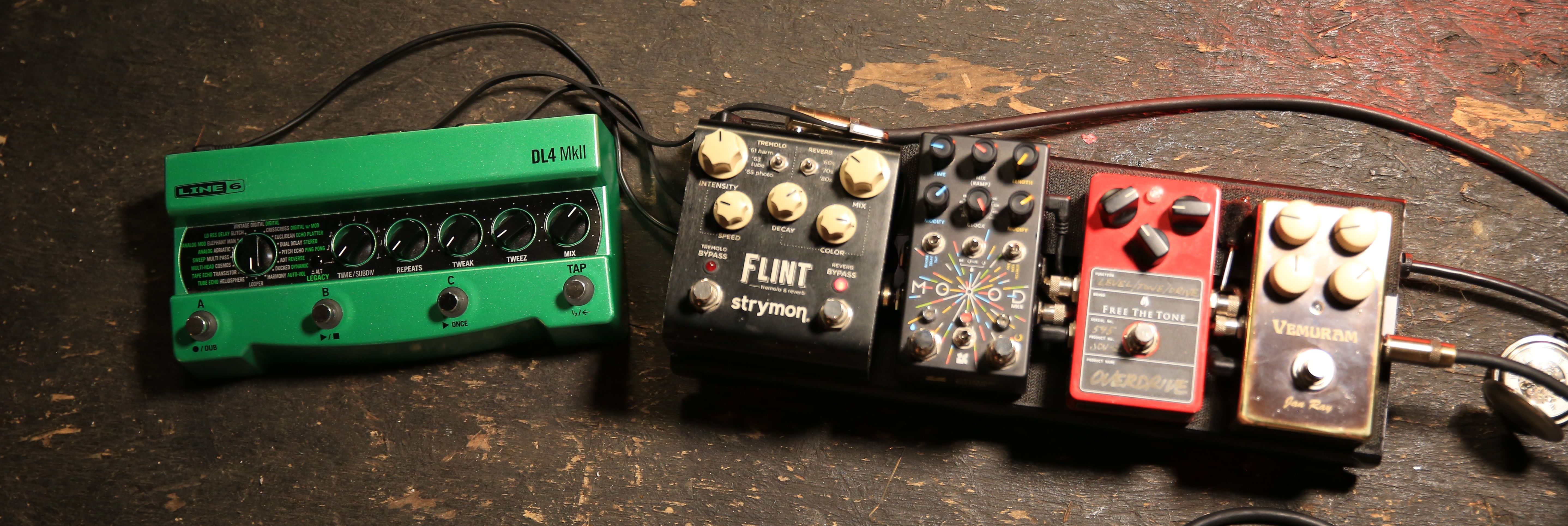 Miller’s Collings runs into a Grace Design ALiX preamp, which helps him fine-tune his EQ and level out pickups with varying output when he switches instruments. For reverb, sometimes he’ll tap the Strymon Flint, but often he’ll let the front of house weave it in.
Miller’s Collings runs into a Grace Design ALiX preamp, which helps him fine-tune his EQ and level out pickups with varying output when he switches instruments. For reverb, sometimes he’ll tap the Strymon Flint, but often he’ll let the front of house weave it in.
Aside from the ALiX and Flint, Miller relies on a Vemuram Jan Ray, Free the Tone SOV-2 Overdrive, Chase Bliss Mood, and Line 6 DL4 Mk II.

Line 6 DL4 MkII Delay Modeler Pedal
Pick Your Pickup Giveaway!

You could WIN a JR "Daemonum" Set or REV Set from EMG Pickups in this all-new giveaway.
EMG Pickup Giveaway
EMG JR "Daemonum" Set
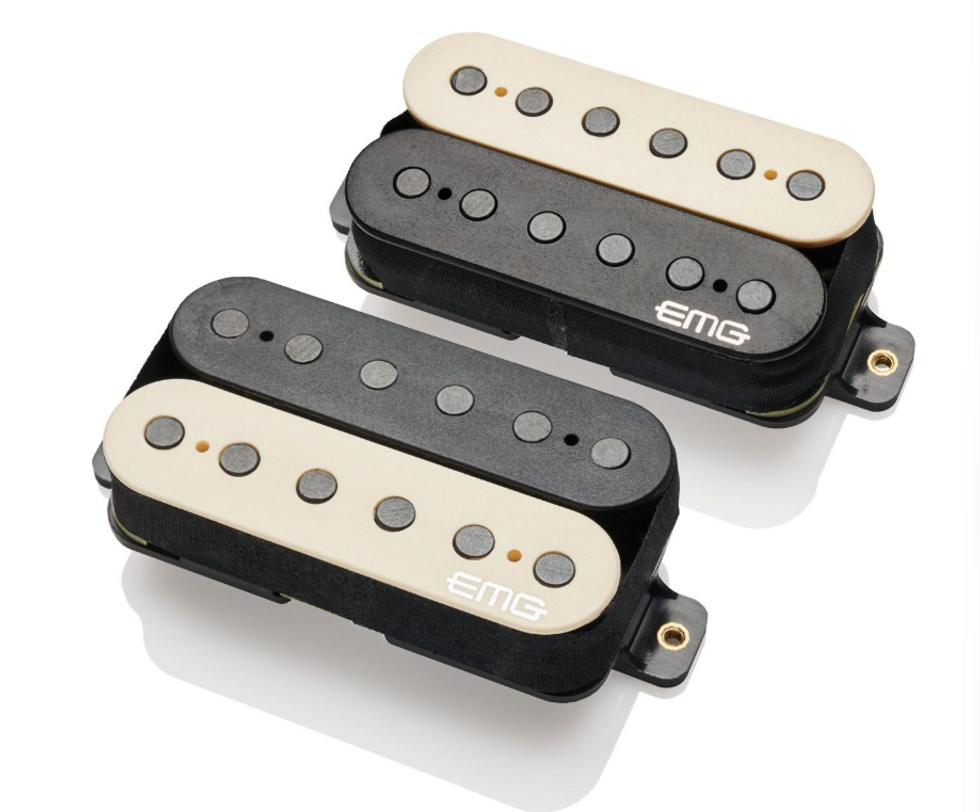
Jim Root, a long time user of the EMG 81/60 combo, began the process of developing a signature set well over three years ago. After trying various prototypes Root was inspired by a set of modified Retro Active pickups to tailor his tone. He settled on a set that gave him everything he loved from the 81/60 with the added benefits and versatility of the Retro Active design.
Unlike traditional open coil pickups, both the bridge and neck pickup utilize stud poles. The fingerboard pickup uses ceramic studs giving it a clean high-end percussive tone. The bridge pickup has black steel poles and features a ceramic magnet, similar to the EMG 81. Both pickups feature custom Retro Active preamps exclusive to the Root set.
Make sure to check the instructions for pickup measurements before purchasing to compare your existing pickups with EMG models.
EMG Rev Set
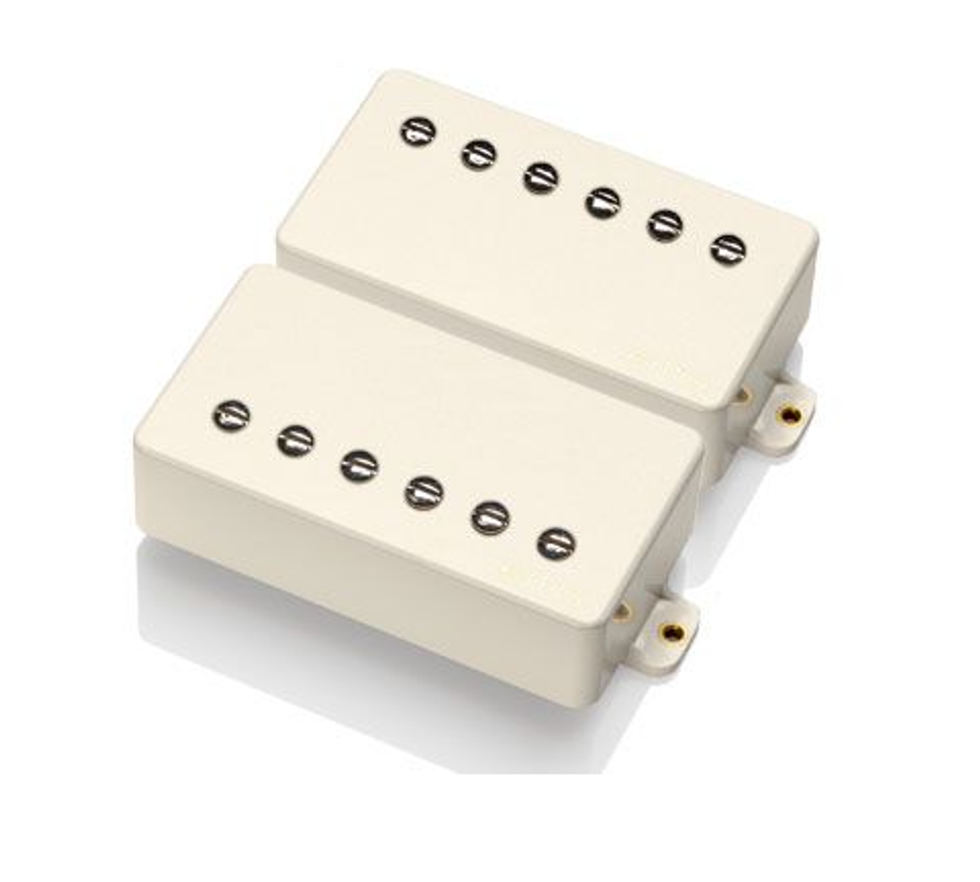
This passive pickup set created for guitarist, songwriter and producer Prashant Aswani. The Revelation Set spent 2+ years in development that included testing in both recording and live playing sessions. After several variations EMG had designed an undeniably brilliant pair of humbuckers that delivered the clarity and definition usually found only in active pickups.
This matched set has precision wound custom bobbins and alnico 2 magnets that create the perfect balance between neck and bridge positions. The alnico 2 magnets have just enough “give” to deliver that classic sponginess passive players crave without the muddiness usually associated with old school PAF-types. Aswani is known for his amazing style and tone and now has the perfect pickups to help him deliver every time.
Make sure to check the instructions for pickup measurements before purchasing to compare your existing pickups with EMG models.

EMG Revelation Passive Humbucker Pickup Set - White
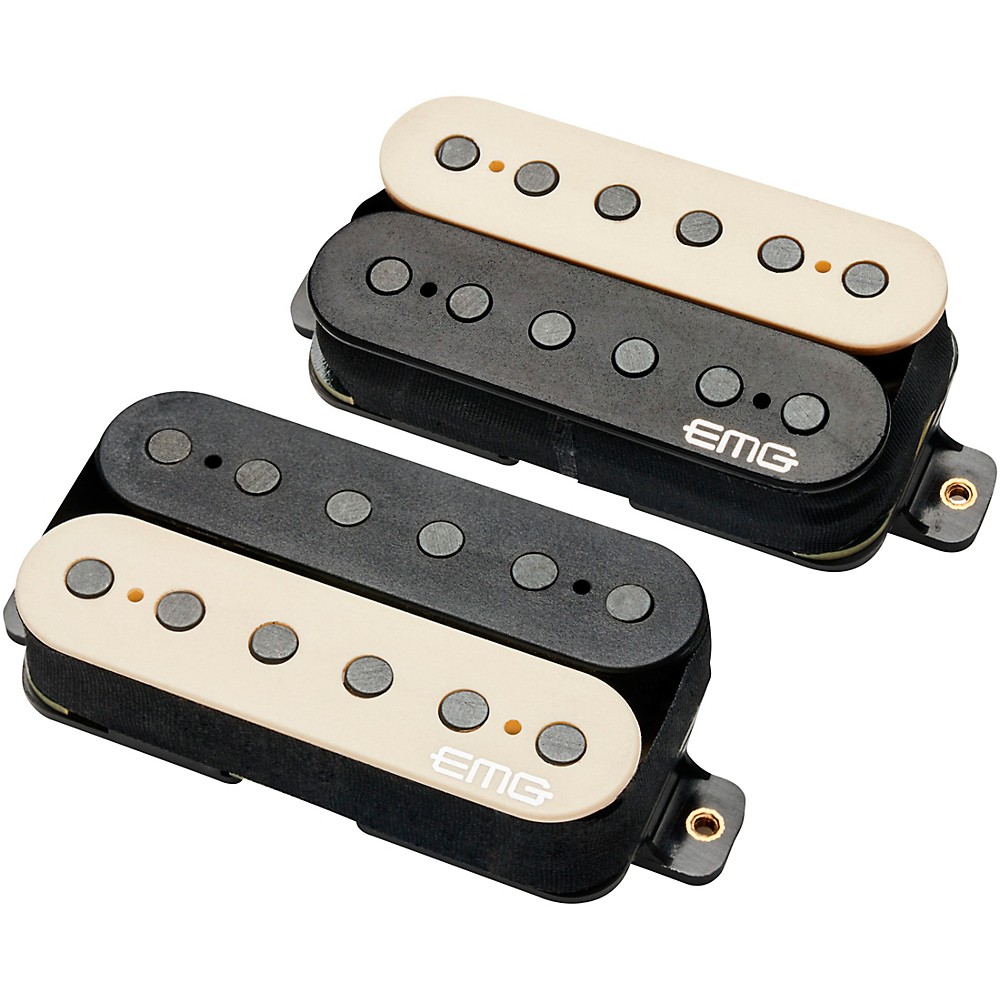
EMG JR 'Daemonum' Signature Set Black and Creme
A Low-Cost Gamma for the Gigging Guitarist
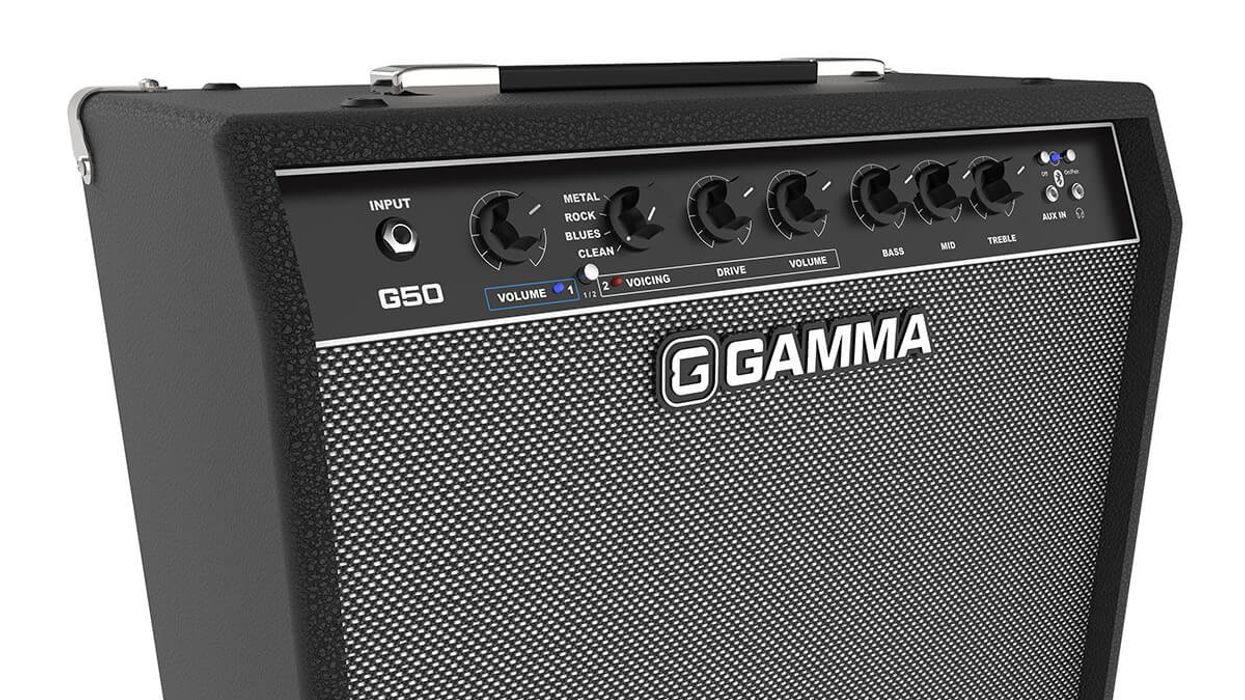
Before getting to the Gamma G50 ($199 street) amp that has solved a lot of problems in my professional life, I should explain my musical day-to-day. One month, I clocked gigs in Jewish old people’s homes for Holocaust survivors, followed by an outdoor concert backing Bootsy Collins. Then, three bluegrass gigs and five gigs with a horn section soul band. Most of those were powered by a mid ’80s Polytone Mini-Brute with a Muzizy 5-band EQ and a cheap reverb pedal. The Mini-Brute is the Dodge Dart of guitar amps—compact and unkillable. I loved that amp as I would a favorite uncle. And like my favorite uncle, it died, to nobody’s surprise, shortly after my 53rd birthday.
I’ve tried different micro-amps. Since my electric life is low volume (mostly jazz or Latin music, with occasional klezmer thrown in), 50 watts is fine by me. If you live roadie-free as I always have (my painfully brief stint with NRBQ notwithstanding), the braggadocio about tone gives way to “fits in the car,” “isn’t hard to lift,” and—this is huge—“doesn’t break.”
There are two schools of thought about amps: The first is that the amp completes the sound of your guitar, which is a Marshall aesthetic. The second is that your amp should sound like whatever you plug into it, maybe with a little reverb for dimension, and that’s Fender thinking. I am definitely a Fender thinker.
My effects rack is minimal—reverb, tremolo, and analog delay (for rockabilly slapback). And the Muzizy EQ.
In my formative years, the amps around my neighborhood were battered Supros, Silvertones, and Univoxes. The guitars were mostly Penco, Morris, Hondo II, Harmony, Silvertone, and unbranded Strat copies. It was how you made do until you could afford something decent.
But inexpensive guitars improved. First lawsuit guitars, then Squier, whose Japan-built Telecasters surpassed their American-made counterparts. Now Harley-Benton et. al. have revolutionized the market.
As a man old enough to recall the Dodge Dart, I look back with longing to the barebones interface of a Supro solid-state combo amp. Who makes that nowadays?
Acoustic has been reborn as Acoustic Control Corporation. Their signature combo amp is the Gamma, available in either a 25- or 50-watt version. The 50 weighs 25 pounds, runs two channels, features a 4-position “voicing” selector that gives you your choice of metal, rock, blues, and clean. The 12" True Blue speaker sounds close to a Celestion, so that’s not bad. The tone knobs are clean and sensitive, with neither dead spots nor sudden gains. The inherent sonic personality of this amp resembles an Ampeg Reverb Rocket (the 1x12 version), and it weighs less. Kind of miraculous for something with no tubes. Warm, quiet, and non-sterile. The control set? Voicing, volume dials for each channel, 3-band EQ, and drive.
“If you live roadie-free as I always have (my painfully brief stint with NRBQ notwithstanding), the braggadocio about tone gives way to ‘fits in the car,’ ‘isn’t hard to lift,’ and—this is huge—‘doesn’t break.’”
Out on the gig? The first night, I used it with Los Chicos del Mambo, a loud 20-piece band. The job was at the Paramount, a giant wooden room in Los Angeles, whose skilled soundman miraculously kept screaming trumpets from deafening the entire 90033 zip code. The bassist played out of a Laney 200H. I played my Harley-Benton CG-200CE electric classical through the Gamma 50, sans effects. And it cut. Headroom to burn.
The next day, same amp but different venue, band, and guitar. Band—Voodoo 5, the eight-piece exotica group I lead with my wife, vocalist Lena Marie Cardinale. The other instruments are flute, vibraphone, pedal-steel guitar, upright bass, and two Latin percussionists. Venue—the Redwood Bar, whose stage is a squeeze for eight. Guitar—an Indio DLX Plus, which is a Jazzmaster copy but with (huzzah!) a maple fretboard, plugged into my anemic effects rack.
The room is smaller, but with a long trajectory from the bandstand to the back. For this performance, I didn’t modify my guitar tone other than to hit the pickup switch. The Muzizy was set to its usual place, reverb on for the whole show, and I only hit the tremolo box on two songs. Guitar and amp doing basic duty.
From Instagram videos, I heard what the audience heard through my $10 earbuds, giving me an un-glamourous idea of what went out into the room, and I am mightily impressed by how formidable the G50 is. Even in the battlefield recording conditions, the presence, reach, warmth, and clarity were unmistakable.
Maybe I was going in search of the simpler operating procedures of my early musical life, but I really wanted an amp that boasts fewer knobs and delivers the character of whatever I plug into it. That it comes in at a price we can all afford and a weight we can all lift is gratifying to this old—old—pro.
Foot-Controlled Analog Delay?? | Black Mountain Roto Echo
PG contributor Tom Butwin walks us through a rugged, pedal‑board‑friendly delay that lets you shape time, feedback, and blend entirely with your foot. The Roto Echo features warm, gritty analog‑style echoes, intuitive real‑time control, and a design tough enough for full body weight. It sounds great on its own, but this wheel‐driven innovation opens up worlds of expressive possibilities.
Black Mountain Roto-Echo
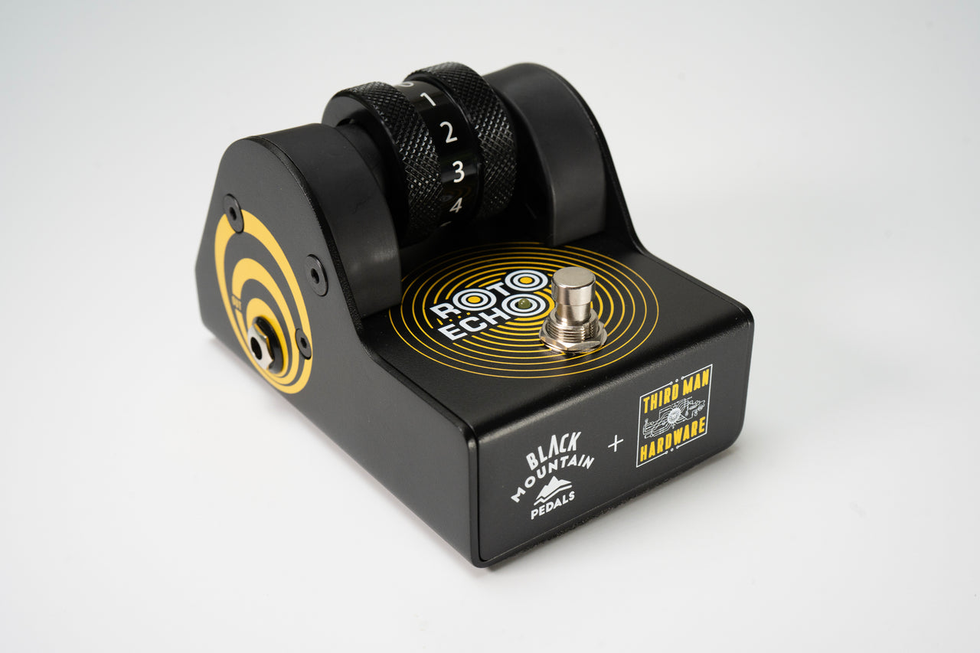
Third Man Hardware and Black Mountain are excited to announce the innovative Roto-Echo delay pedal. Instead of tweaking delay parameters with your fingers, the pedal’s
Freewheel® Technology allows players to change them with their feet in real-time as they play –
a small change that leads to tons of creative possibilities.
The Roto-Echo is built tough and players can put their full weight onto the pedal with no
problem. It’s the same size as a regular Boss-style guitar pedal, and fits on any pedal board.
Key Features
● Foot-Controlled Adjustments: Change Time, Feedback, or Blend while you play.
● Analog-Style Delay: Warm, gritty echoes up to 600ms.
● Rugged Build: Built to handle full body weight on stage.
● True Bypass: Keeps your tone pure when switched off.
● Play Sitting or Standing: Built for performance.
● 9V, Center Negative Power
● Morph feedback from short to infinite repeats
● Ramp wet/dry mix for dramatic effect
● Sweep delay time to bend and warble pitch, and so much more
Voltage Cable Co.® Releases “Tele” Plug for the Voltage Vintage Coil® V2
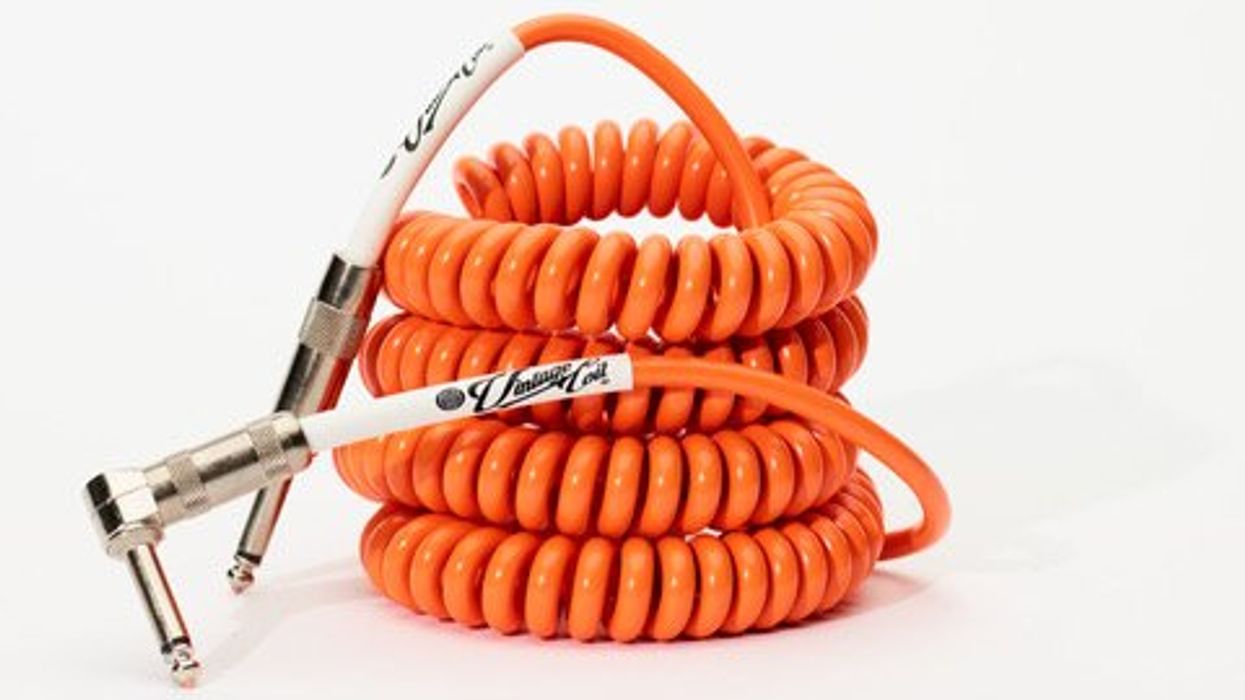
Voltage Cable Co.® has introduced a new hardware option to its best-selling Voltage Vintage Coil® V2: a long-frame right-angle “Tele” plug by G&H USA. Purpose-built for recessed Tele guitar jacks and vintage-style guitars, this new plug ensures a tighter fit and improved seating depth - solving a long-standing problem for players using standard short right-angle connectors.
Each cable continues to feature Voltage’s hallmark component stack: 21 AWG spiral-shielded conductors, Cardas Quad Eutectic silver solder, and the patented ISO-COAT® hermetic seal, now officially granted under Australian Standard Patent No. 2024204464 as of June 26, 2025. The result is an elite-class instrument cable with lifetime-grade durability and signal reliability, built specifically for working musicians.
The Voltage Vintage Coil® V2 is available in seven vintage-inspired colors and ships globally.
Available now at $99 USD MAP: voltagecableco.com/products/coiled-guitar-cable-voltage-vintage-coil-v2
Tony Iommi Signature Humbucker
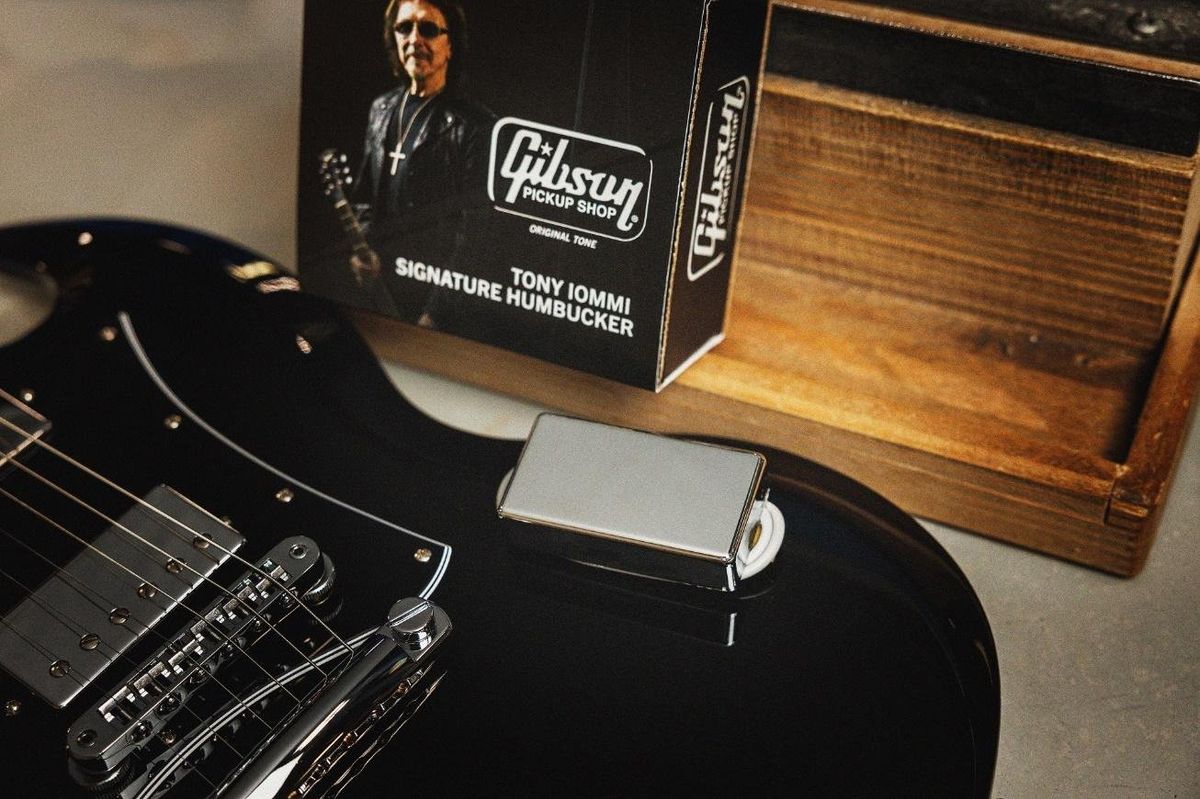
The Gibson Pickup Shop Artist Collection pickups are created in collaboration with some of the world’s most influential artists, including legends who shaped the sounds that built the foundation of modern music, as well as some of today’s most innovative players who continue to shape the sound of music across genres and influence musicians worldwide. Gibson is proud to continue its partnership with Tony Iommi, the legendary guitarist of Black Sabbath, with the launch of the Tony Iommi Signature Humbucker™, available worldwide on www.gibson.com.
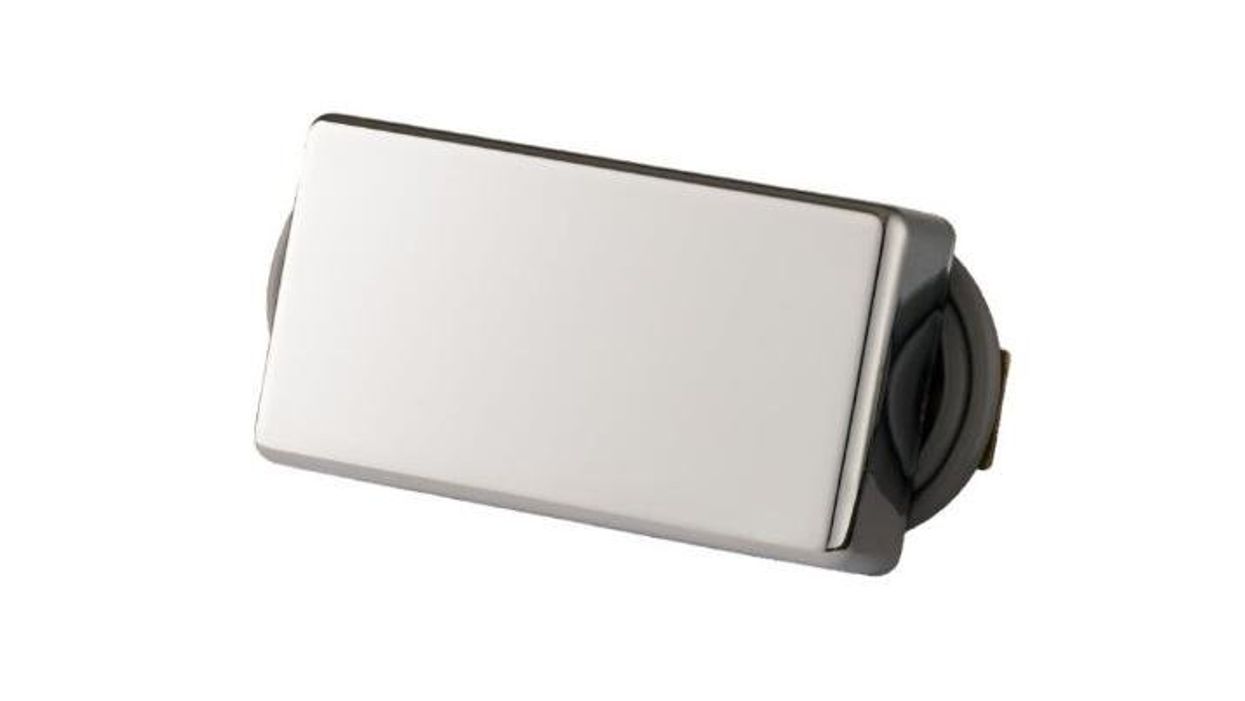
Tony Iommi’s legendary guitar work, powerful sound, and groundbreaking albums laid the foundation for heavy metal and inspired countless other genres. His music and his legacy are celebrated across the globe, and in the late 90s, Gibson teamed up with Tony to create their very first signature pickup. Today, that original Gibson signature humbucker makes its long-awaited return.
The Tony Iommi Humbucker features an exclusive configuration of powerful ceramic and Alnico 2 magnets, along with unique windings, that give it the incredible tone and sustain that have helped make Tony’s work with Black Sabbath instantly recognizable. Thunderous tone and incredible sustain, with crystal clarity, even in full distortion, the Tony Iommi Humbucker is fully wax-potted and epoxied for absolute protection against unwanted feedback. The 4-conductor wiring allows for series, parallel, and split coil operation.
“I’m really excited that Gibson’s bringing back my signature humbucker, they were getting pretty hard to find!” says Tony Iommi. “This pickup came about after a lot of time spent in Nashville, just experimenting with different setups to get that perfect tone and sustain from my favourite guitars. We had to make sure it worked with my light gauge strings and low tunings, but still pack a punch, and the result has got some serious output. They're on my signature guitars too, and I couldn’t be more pleased with how they turned out."
“I’d personally installed these on one of my Gibson guitars 15 years ago, and I was blown away with the distinct Tony Iommi and Black Sabbath sound I was able to get out of them,” explains Cesar Gueikian, President and CEO of Gibson. “They have such a great, clean look with the unique pickup cover, and we are excited to bring the Rifflord’s signature humbucker back as we continue to pay tribute to Tony.”
“It’s great to have the first signature pickup from Gibson back, and there really isn’t a more fitting artist than Tony Iommi,” says Lee Bartram, Head of Commercial and Marketing EMEA at Gibson. “Tony is synonymous with the Gibson SG™, but now the volume, presence, and overall power he produces through his playing can be experienced in other models too, whether at home, in the studio, or on stage. Thanks to Tony for his continued support and trust; these pickups are the result of our constant collaboration, and we look forward to what’s next for our partnership.”
Third Man Hardware and Black Mountain Designs Introduce the Roto-Echo Delay
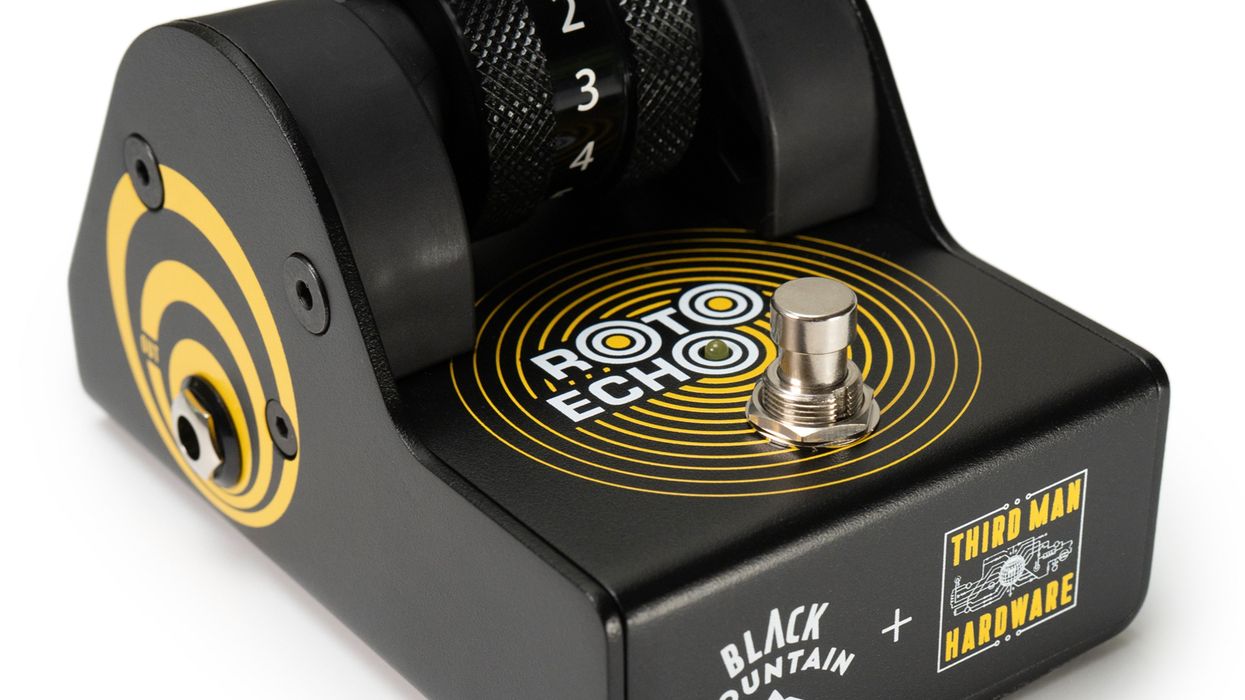
Jack White’s Third Man Hardware and Black Mountain Designs have teamed up to release the Roto-Echo, a new delay pedal designed to give guitarists hands-free control over their delay parameters, in real time, while they perform.
At first glance, the Roto-Echo looks like a familiar-sized delay stompbox. It’s a foot-controlled delay pedal built for the stage and easily fits on a standard pedalboard. On top of the pedal, there’s a roller wheel—smooth, weighted, and spring-loaded. The player can assign that wheel to control blend, feedback, and delay time via a three-way toggle switch. The core delay circuit is based on the PT2399 chip, offering warm, gritty echoes from 60MS a slapback to roughly 588MS repeats.
What makes the Roto-Echo different is how those parameters can be shaped in the moment. The roller wheel responds to foot motion, and with practice, players can perform swells, shifts, or rhythmic changes in their delay sound as they play—no need to crouch down or dial knobs mid-song or rely on presets. Sound manipulation typically reserved for the studio is now easy to perform live.
Specs at a glance:
• Delay Time: 30ms to ~600ms (PT2399-based)
• Roller Wheel: Assignable to Time, Feedback, or Blend. Rated for full body weight.
• Power: 9V DC (center negative)
• Current Draw: <100mA
• True Bypass
• Compact design, pedalboard friendly
The new Roto-Echo pedal carries a street price of $279. For more information visit blackmountainpicks.com.
Share Your Opinion on Amp Modeling Pedals for a Chance to Win

We'd love to hear your thoughts on amp modeling pedals. Answer our short survey and you'll be automatically entered for your chance to win! Don't worry, it will only take a couple of minutes.
Click here to share your opinion and be entered!
The Prize: Fender Vintera II '60s Telecaster Electric Guitar - Sonic Blue
Revive the timeless sound of the '60s with the Vintera® II '60s Telecaster® and experience the iconic looks, inspiring feel and incomparable tone that only a Fender can deliver.
The Vintera® II '60s Telecaster® features an alder body and a maple neck with rosewood fingerboard for classic Fender tone that's full of punch and clarity. The early-'60s "C" shape neck is based on a classic '60s profile for an intuitive and inviting feel, while the 7.25" radius fingerboard with vintage-tall frets provides vintage comfort with ample room for big bends and expressive vibrato. Under the hood, you'll find a pair of vintage-style '60s pickups that deliver all the crystal-clear chime and raw, steely twang that made Fender famous. The vintage-style 3-saddle bridge with slotted steel saddles offers authentic '60s twang, while vintage-style tuning machines provide classic looks with a finer gear ratio and enhanced tuning stability to complete the package.
Experience the unmistakable vintage feel and unmatched sound of a classic Fender with the Vintera® II '60s Telecaster® today and start making music history!
Do These New Fender Guitars Beat Your Vintage Favorite?
Vintage spirit and looks live in a Telecaster and Stratocaster with contemporary refinements at every turn.
Fender American Ultra Luxe Vintage 50s Telecaster
Representing the pinnacle of innovation and craftsmanship, Fender American Ultra Luxe sets the benchmark for premium electric instruments. The new American Ultra Luxe Vintage series takes it a step further, showcasing the finest of Fender heritage – where timeless classics meet uncompromising modern refinement. The American Ultra Luxe Vintage 50s Telecaster features premium ash with carved contours that complement the aged Heirloom™ lacquer finish. Built for precision performance, the quartersawn maple neck with a Modern ‘D’ shape and Ultra rolled edges features medium jumbo stainless- steel frets, Luminlay side dots, and a Graph Tech TUSQ nut. Each instrument features a tapered neck heel to ensure unparalleled access to the higher register. Under the hood, Pure Vintage ’51 Tele pickups deliver classic Fender tones, from sparkling cleans to rich, expressive leads. Performance hardware includes a precision-engineered 6-saddle string-though-body bridge with brass block saddles and deluxe locking short post tuners for quick string changes and superior tuning stability. The American Ultra Luxe Vintage 50s Telecaster delivers flawless modern performance with distinctive classic design. Available in Butterscotch Blonde and White Blonde.
Fender American Ultra Luxe Vintage 60s Stratocaster
Representing the pinnacle of innovation and craftsmanship, Fender American Ultra Luxe sets the benchmark for premium electric instruments. The new American Ultra Luxe Vintage series takes it a step further, showcasing the finest of Fender heritage – where timeless classics meet uncompromising modern refinement. The American Ultra Luxe Vintage 60s Stratocaster features premium alder with carved contours that complement the aged Heirloom lacquer finish. Built for precision performance, the quartersawn maple neck with a Modern ‘D’ shape and Ultra rolled edges features medium jumbo stainless- steel frets, Luminlay side dots, and a Graph Tech TUSQ nut. Each instrument features a tapered neck heel to ensure unparalleled access to the higher register. Under the hood, Pure Vintage ’61 Strat delivers classic Fender tones, from sparkling cleans to rich, expressive leads. Performance hardware includes a precision-engineered 2-Point American Ultra synchronized tremolo with polished stainless steel block saddles, cold rolled steel block, and deluxe locking tuners for quick string changes and superior tuning stability. The American Ultra Lux Vintage 60s Stratocaster delivers flawless modern performance with distinctive classic design. Available in Ice Blue Metallic and Surf Green.
Cheap Trick Announce New Album, All Washed Up, Out Via BMG November 14
The one and only Cheap Trick have announced today’s premiere of their new single. The infectious and anthemic “Twelve Gates” is available now at all DSPs and streaming services. The song heralds the Rock n' Roll Hall of Famers' eagerly anticipated 21st studio album, All Washed Up, arriving via BMG on Friday, November 14 digitally as well as on standard black vinyl and CD. A limited-edition exclusive "Orange Marble" LP variant of the album, limited to 1,000 units, will be available to pre-order via the band's new D2C store.
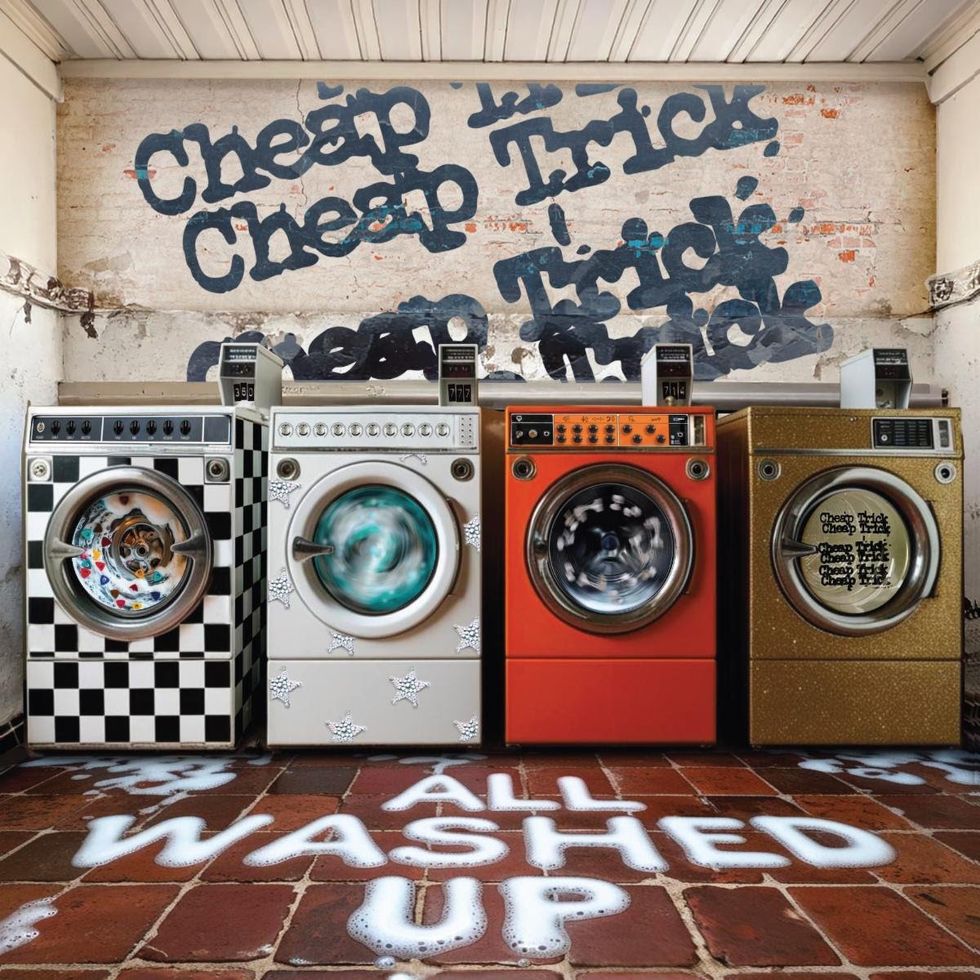
“Our newest single release, 'Twelve Gates,' from the 2025 LP All Washed Up, is one of our best yet,” says bassist Tom Petersson. “ I really love how this song came out. It's one of my favorites on the album.”
All Washed Up was produced by the band and Julian Raymond. It was mixed by Chris Lord Alge and recorded at various studios in Nashville (Sound Emporium Studios, Blackbird, Love Shack, Zen) as well as in LA (Sweetzerland Studios) through 2024.
"Just one more great album from the best rock band in the world," says lead singer/guitarist Robin Zander.Tracklisting:
Cheap Trick have also announced Fall 2025 tour dates to add to their gloriously never-ending run. The new dates start October 12 at Oxford, AL’s Oxford Performing Center and conclude at Vibrant Music Hall in Waukee, IA on December 7. Tickets are on sale now. The complete itinerary is below.
CHEAP TRICK – TOUR 2025
AUGUST
20 – Rhinebeck, NY – Dutchess County Fair
21 – Syracuse, NY – New York State Fair
28 – Salem, OR – Oregon State Fair – LB Day Amphitheatre
31 – Pueblo, CO – Colorado State Fair
SEPTEMBER
19 – Menlo Park, CA – The Guild Theatre
20 – Napa, CA – Blue Note Napa Summer Sessions at Meritage Resort
29 – Osaka, JP – Grand Cube
OCTOBER
1 – Tokyo, JP – Budokan
11 – Miramar Beach, FL – Seascape Resort Golf Club & Tennis Resort
12 – Oxford, AL – Oxford Performing Arts Center *
21 – Huntington, NY – The Paramount *
22 – Bethlehem, PA – Wind Creek Bethlehem – Wind Creek Event Center *
24 – Atlantic City, NJ – Hard Rock Live*
25 – Lynn, MA – Lynn Memorial Auditorium *
NOVEMBER
9 – Chandler, AZ – Wild Horse Pass Hotel & Casino – The Showroom *
11 – Monterey, CA – Golden State Theatre *
14 – Reno, NV – Grand Sierra Resort and Casino *
16 – Turlock, CA – Turlock Community Theatre *
18 – Anaheim, CA – HONDA Center +
23 – Seattle, WA – Climate Pledge Arena +
DECEMBER
2 – Omaha, NE – Baxter Arena +
4 – Green Bay, WI – Reach Center +
5 – Madison, WI – The Sylvee *
7 – Waukee, IA – Vibrant Music Hall *
* Newly Announced Date
+ with Heart
Fish Circuits Echo Limiteur Review
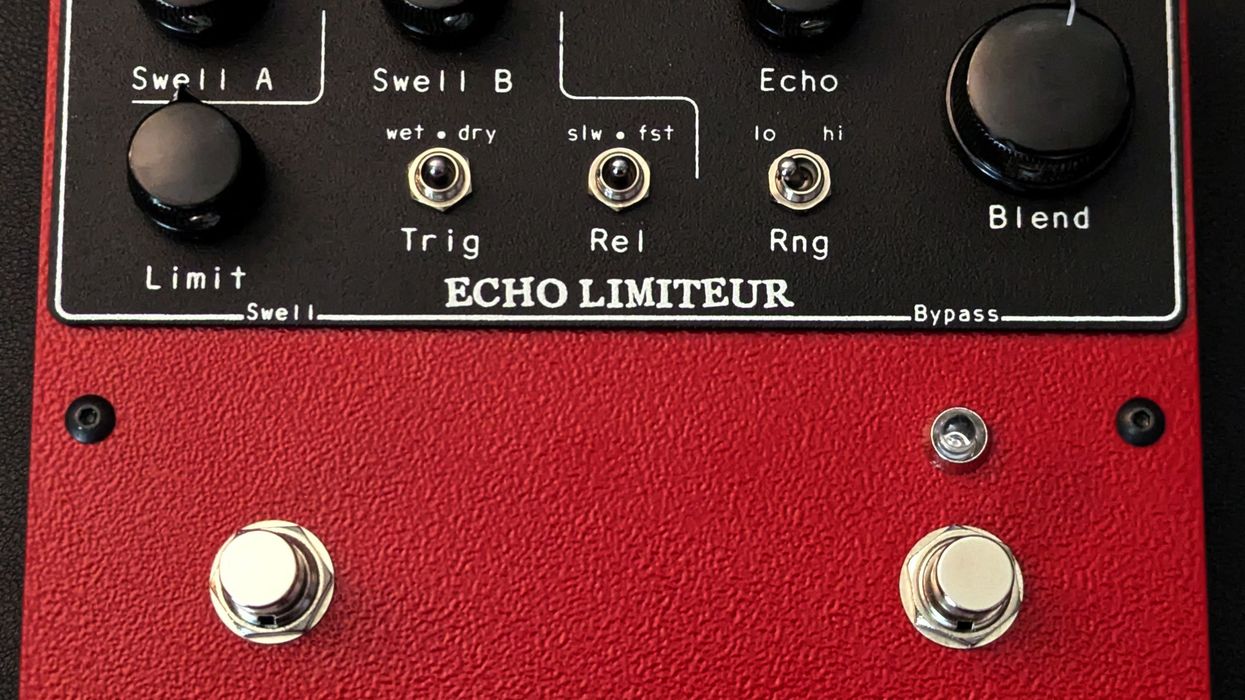
Montreal’s Fish Circuits, helmed by builder Mike Poisson, has made quite a splash the past few years with colorful offerings like the Model One, Lunatique, and most recently the Astronomie, a dynamic reverb that can swell in and out depending on settings and playing style. Fish Circuits’ first delay, the Echo Limiteur, comes in a characteristically sleek box that, like all their others, could be used as a bludgeon. But with an analog delay, a second digital delay, and a limiter, its utility as a tool for defense pales in comparison to the sounds its circuitry produces.
Swell Set Of Features
The Echo Limiteur consists of two delay modes, swell A and swell B. Swell A is a straightforward delay channel, governed just by the global echo and blend knobs and the range switch. The last of these shortens or lengthens the delay-time range of the echo control. “Hi” gives you longer delay times (up to 1150 milliseconds) and slightly cleaner repeats courtesy of the digital PT2399 chip, while “Lo” gives you lower-fidelity repeats and a shorter sweep of possible delay times (up to 650 milliseconds). Both swell A and swell B knobs control the number of repeats.
The limiter affects the swell B mode alone. It limits the delay feedback and can be triggered dynamically by the dry signal, wet signal, or both. This effectively means you can use infinite repeats that won’t overpower your dry sound and/or infinite repeats that reset each time you pick a note or chord. The release switch tells the limiter how quickly to lay off the limiting, while the trigger lets you decide whether a dry, wet, or combined signal activates the limiter. Limit, meanwhile, controls the sensitivity of the trigger: All the way counter-clockwise, it’s nearly non-existent, while fully clockwise, the slightest noise in your signal will trigger the limiter, chopping the repeats. All three controls are extremely interdependent.
Got it? Probably not. You have to physically experience the responses of each of these features to really grasp how they manipulate the signal. And there will be some who wish the Echo Limiteur’s switch-controlled functions were more deeply tweakable. Not me though; we are in the age of the pedal-builder-as-auteur, and I loved allowing my playing to be guided by Poisson’s preset parameters.
Push it to the Limit
Playing through the dynamic-delay side of the Echo Limiteur immediately expands the possibilities of your instrument. Because it responds to playing dynamics, it’s not exaggerating to say there are endless ways to apply the Echo Limiteur. You can set it for a cavalcade of tight, spiraling repeats that cut out sharply the second you play another note, or you can tone down the limiter so that it only cuts off the delay when you play hard. In this arrangement, you can pick delicately beneath a bed of towering, oscillating feedback and pull the plug on the delay just by strumming a bit harder. If you want to bail on the dynamic aspect entirely, you just hit the left footswitch and you’re in regular delay land (the right one is the on/off switch).
Thanks to the analog MN3005 chip, the repeats are foggy, greasy, and frayed. But the augmented repeat lengths—courtesy of the digital PT2399 chip—extend the pedal’s utility. My only gripe is that I wish the Echo Limiteur was capable of even shorter, tighter delay times. It bottoms out at roughly 100 milliseconds, which means you can’t use the dynamic limiter with the most slashing and jittery machine-gun repeats.
The Verdict
The Echo Limiteur already feels destined to be a classic. The potential applications in live contexts, in particular, are thrilling to consider, and I’m sure that in the years to come, we’ll hear new music defined by the Echo Limiteur’s many voices.
Canadian Punks the Dirty Nil Crack the Whip Again
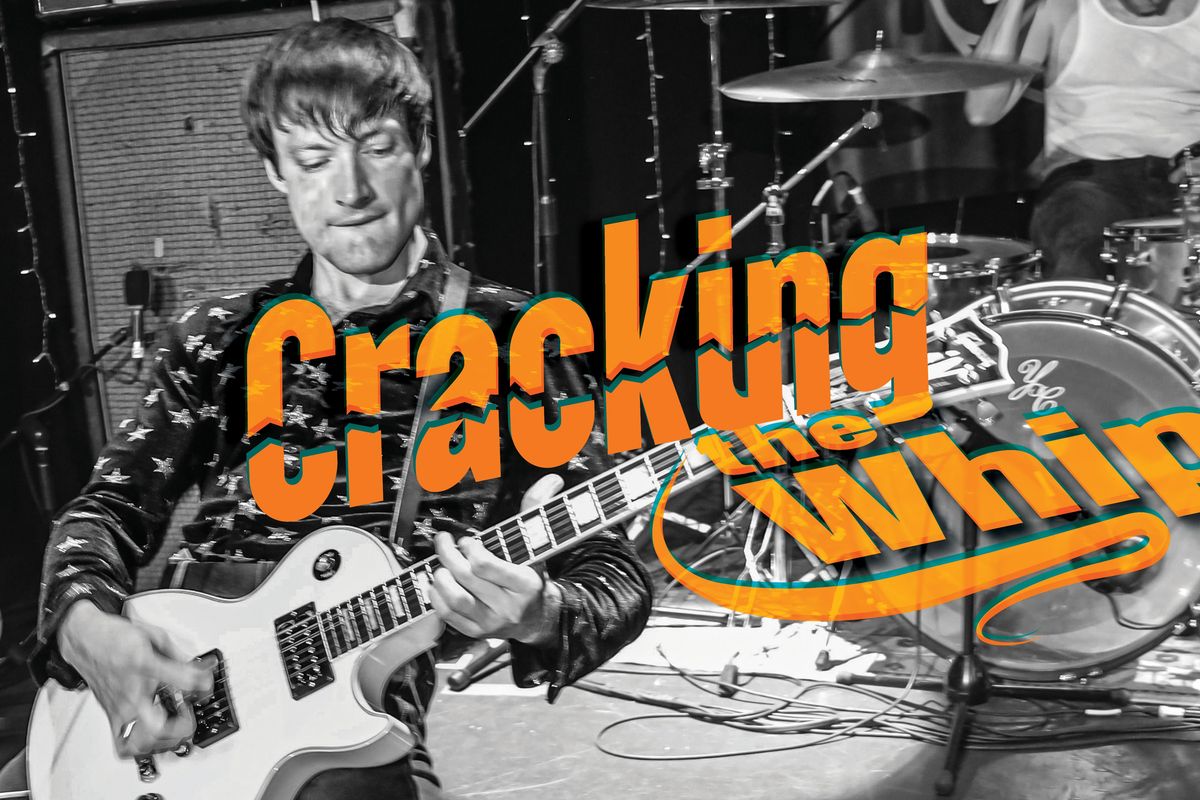
Luke Bentham, guitarist and vocalist in Hamilton, Ontario, rock outfit the Dirty Nil, was in the basement caverns under the Vatican when he glimpsed something that changed the direction of his band. It was a series of bronze reliefs by Francesco Messina, depicting the horrors of war. Amid the six pieces in the series, one in particular grabbed Bentham: It showed two men in desperate hand-to-hand combat, grappling to get control of a knife. “It was the hardest piece of art I’d seen in a very long time,” says Bentham.
YouTube
Enjoy the videos and music you love, upload original content, and share it all with friends, family, and the world on YouTube.
He and Nil co-founder and bandmate, drummer Kyle Fisher, tried to obtain the rights to use the image for the cover of their new record, The Lash, but the Vatican wasn’t having it. “We got a cease and desist from the Vatican, and their lawyers are no joke,” Bentham says with a grin.
Still, before he left, Bentham snapped a picture of Messina’s sculpture on his phone, and it hovered over the creation of The Lash like a twisted idol. “It definitely fired me up musically for some reason,” he says. “It’s rare that I’ll see something and it’ll make me want to play my guitar a certain way, but this is one instance where it came to pass that way.”
Messina’s work took Bentham somewhere vicious and primal. It pulled him back to some of the sounds the Nil had explored earlier in their 14-year career: white noise, feedback shrieks, “sheet-metal-shaking distortion.” It made Bentham think of the work of the Jesus Lizard’s Duane Denison. “Something about this cold, metallic, brutal piece of art made me play guitar a bit more angularly, and with a much higher threshold and acceptance of microphonic and horrible feedback than I’ve been looking for on our last few albums,” he says.
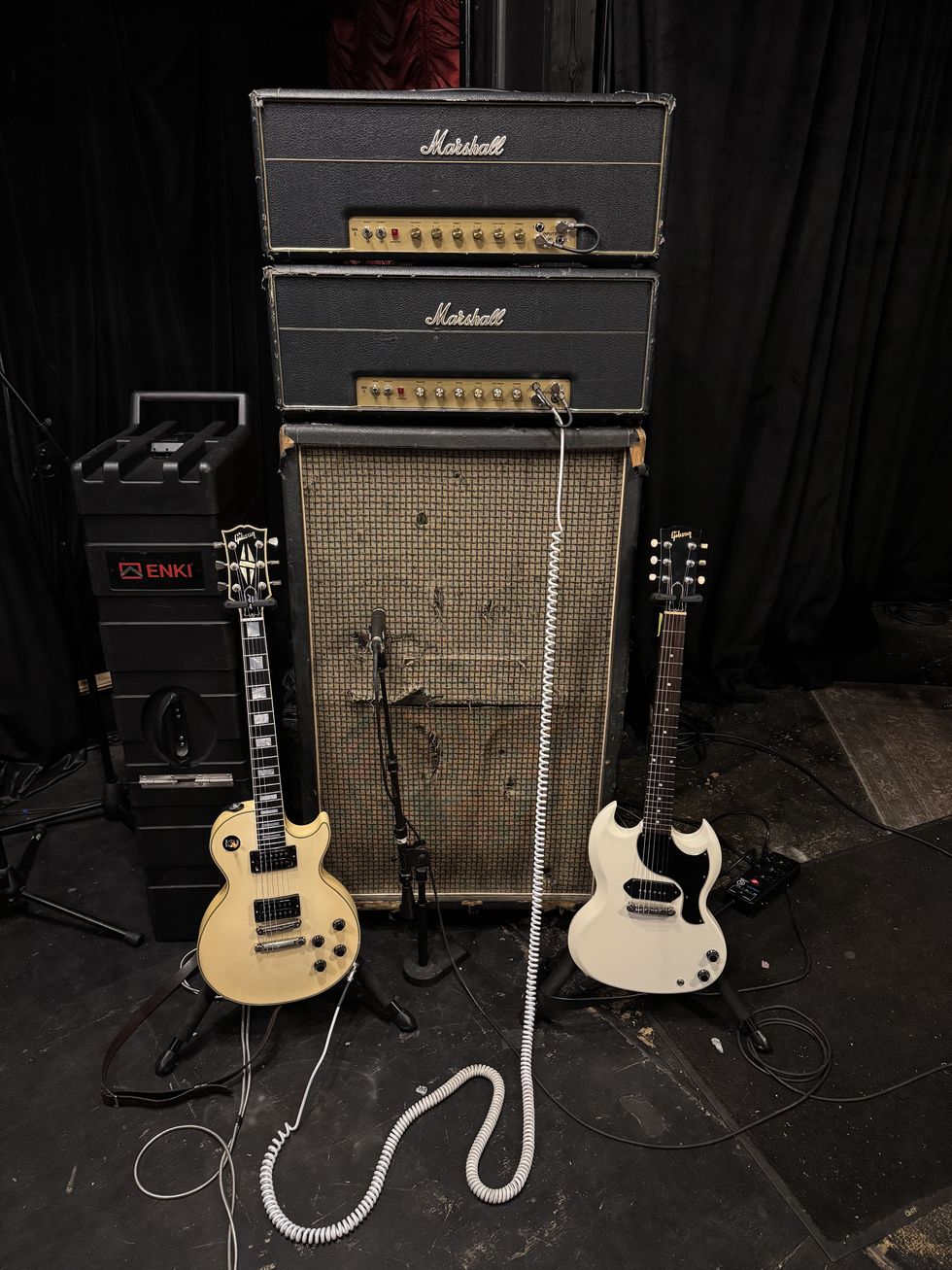
Enter The Lash, a scummy, barbwire-scraped slab of punk rock ’n’ roll, scarred with white-hot slashes of classic metal, hardcore, thrash, and garage rock. After the radio-ready melodies and tidy production of 2021’s Fuck Art and 2023’s Free Rein to Passion, The Lash feels like a triumphant return to the basement. “I’m incredibly proud of this record because we made it because we wanted to,” says Bentham. “I’m not a big believer in the idea that tension makes good records.”
“Something about this cold, metallic, brutal piece of art made me play guitar a bit more angularly, and with a much higher threshold and acceptance of microphonic and horrible feedback.”
To honor that energy and bring The Lash to life, Bentham and Fisher bailed on the higher-budget trappings of their previous records and went back to basics, working with local engineer and powerviolence musician Vince Soliveri at Boxcar Sound in Hamilton. When it came time to record Bentham’s vocals, Soliveri had a strange-looking mic set up. “I was like, ‘What’s this microphone? Is it something you like to use for vocals?’” Bentham recalls. “Vince was like, ‘I have no idea what it is. It just looked cool, so let’s try it out.’”
He continues, “I think Vince’s attitude towards that specific thing is a pretty good indicator of how we approached making this record, which was different from the 'tried and true' way we've made our last few. There are trade-offs when you enter that world, and complexities that enter your life and your band when it comes to staying in that world. With pretty much all of our previous records, there’s been some sort of behind-the-scenes animating force to make it a certain way or an internal pressure: ‘If we do this, then maybe we can get that.’ We basically decided for ourselves that we had fun, but we are leaving the casino.”
Luke Bentham’s Gear
Guitars
1975 Gibson Les Paul Custom
Shyboy T-style (studio)
1952 goldtop Gibson Les Paul (studio)
Amps
Marshall 1959SLP w/ Marshall 8x10 cabinet
Ampeg VT-22 (studio)
Fender Deluxe Reverb (studio)
Vox AC4 (studio)
Effects
Various Pro Co RAT models
Electronic Audio Experiments 0xEAE Boost
Strings & Picks
Ernie Ball Power Slinky (.011–.048)
Dunlop .73mm picks
Those “internal pressures,” which are skewered on the new track, “Rock N’ Roll Band,” were jettisoned this time. With The Lash, the philosophy was simply, “Let’s just make a record, see what happens,” Bentham says. “It’s been a long time since I found myself in that headspace, I think probably since we made ‘Fuckin’ Up Young’ and all those songs 14 years ago.”
“We basically decided for ourselves that we had fun, but we are leaving the casino.”
Still, The Lash has moments unlike anything the Nil have produced to this point. The slow, cornered-animal growl of “This is Me Warning Ya” and the haunted-house romance of “Spider Dream” are two of the record’s doglegs into the softer end of the macabre. And the stomping “That Don’t Mean It Won’t Sting,” is unexpectedly intro’d by cello and xylophone, thanks to violinist and friend Sara Danae.
Even as the band has grown, Bentham’s rig has scarcely changed. His calling-card tone for the past decade has been a 1975 Gibson Les Paul Custom, tuned to E-flat standard, through a Pro Co RAT (or two, with the second set to “drop the hammer”) and into a Marshall 1959SLP head and a Marshall 8x10 cabinet. Bentham admits he’s pretty hard on his guitars—the ’75, which has a stock pickup in the neck and an early production DiMarzio Super Distortion in the bridge, has had its headstock broken on more than one occasion.
While recording The Lash, though, Bentham changed things up. Rather than the usual RAT pedals, he leaned on the Electronic Audio Experiments 0xEAE Boost, which he describes as the most “extreme” dirt pedal he’s used to date. “That pedal is absolutely brutal,” he says with a smile. For the record’s violent feedback, Bentham and Soliveri borrowed one of producer John Goodmanson’s tricks: Split the guitar signal via an A/B box, send one signal to the amp being tracked in an isolation room, and another to a 5-watt amp in the control room. The feedback generated from the small combo jumps back through the pickups, and out to the stack in the isolation room (a Vox AC4 helped out for those purposes). For clean tones, meanwhile, Bentham called on his godfather’s 1952 Les Paul goldtop and a Shyboy Telecaster copy, both running into an Ampeg VT-22. The Ampeg’s reverb, along with the onboard effect from a Fender Deluxe Reverb, is the only coloring Bentham applied besides his dirt.
“There are so many distractions and complications as you navigate a career in music, but you must return to the simple joy of a howlingly distorted Les Paul Custom E chord as your guiding light.”
The RAT, by the way, is still Bentham’s one true love in live settings. “I’ve learned not to mess with my rig, which has served me very well for basically 12 years now,” he says. “It’s never ceased to put a smile on my face to plug into my plexi with my Custom, turn it up, and play an E chord. If that doesn’t make me happy, then I’m probably done with rock ’n’ roll, because that’s what this whole thing is. There are so many distractions and complications as you navigate a career in music, but you must return to the simple joy of a howlingly distorted Les Paul Custom E chord as your guiding light.”
YouTube
On his long-running video tutorial series Let ’er Riff, Bentham breaks down the tricks behind the foundation-shaking fury of The Lash’s opening track, “Gallop of the Hounds.
IK Releases Brown Sound 80/81
IK Multimedia releases the Brown Sound 80/81 Signature Collection for TONEX, the second part of the limited TONEX Brown Sound series. Carefully crafted to match the recorded tones of two iconic early-'80s albums, this collection features 73 precisely designed Tone Models, along with several amp-only captures that can be used with IK or 3rd-party IRs or run through a real cab live on stage.
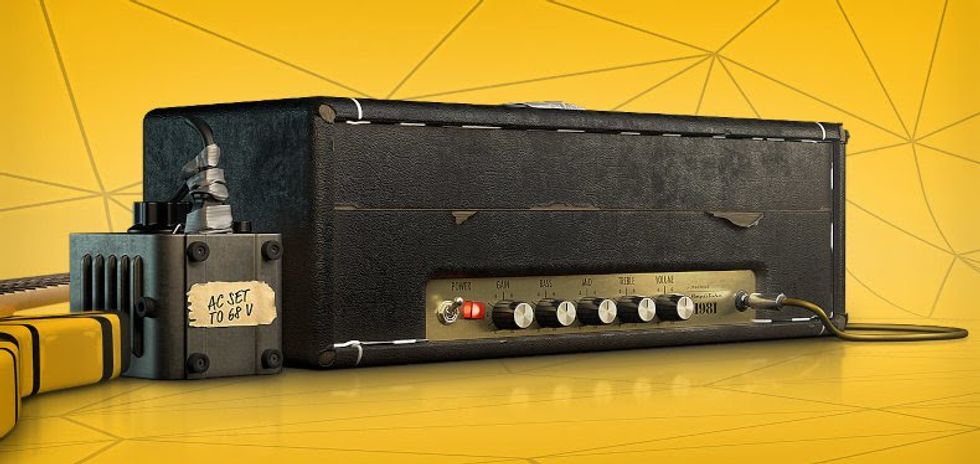
Offering both authentic recreations and thoughtful variations to reflect different theories about how these legendary tracks were recorded, the new Brown Sound collection captures the darker swagger and heavier edge that marked a milestone in the guitarist's journey.
1980 Tone Models
On the 1980 album, the tones are thicker, drier, and more saturated than on the second album, marking a return to a raw, aggressive sound that echoes the ferocity of the debut. It's more in-your-face with a noticeable midrange punch, tighter low end, and more focused articulation. It reflects a shift toward a more modern, high-gain tone, hinting at the sonic direction that would influence the next generation of rock and metal players.
1981 Tone Models
Compared to the raw brightness of 78/79, the 1981 tone is tighter and more controlled, with pronounced low-mids and a more percussive attack. There's less of the spacious, open-air feel of the earlier records, replaced by a thick, almost claustrophobic intensity that matches the album's darker vibe. The gain is higher, the reverb is dialed back, and the overall sound feels more focused, brooding, and polished, yet still unmistakable.
The Amp: "The ONE"
At the heart of the Brown Sound 80/81 collection is "The ONE" - a meticulously crafted Marshall-style amp built from the ground up with the exact same spec as the infamous 1968 Super Lead serial number #12301, including crucial mods that capture the DNA of the early brown sound like no other amp model.
Ready to Play
As with all collections in the series, these Tone Models were crafted using period-correct gear and capture techniques to recreate the middle two albums of that era genuinely. Each Tone Model reproduces the recorded album tone in exquisite detail, offering an ideal foundation for adding time-based effects-either within TONEX or through a favorite pedal.
Pricing and Availability
The Brown Sound 78/79 Signature Collection is now available via ToneNET and within any version of TONEX for Mac/PC at $/€99.99.*
- TONEX Brown Sound 78/79 – $/€99.99* - Includes 50 Tone Models.
- TONEX Brown Sound 80/81 – $/€99.99 – Includes 73 Tone Models.
- TONEX Brown Sound 82/84 – $/€79.99 pre-order (reg. $/€99.99) – Includes 77 Tone Models. Coming soon.
- TONEX ONE Brown Sound Limited Edition – $/€249.99 – Available in white, red, or yellow. Includes Brown Sound 78/79 and a choice of one other Brown Sound collection (a $/€199.98 software value). Existing Brown Sound 78/79 users will receive a $/€50 discount at the IK store.
- TONEX Brown Sound Anthology Collector's Limited Edition – $/€599.99 – Box set includes all three colors of TONEX ONE (white, red, and yellow) plus all three Brown Sound Signature Collections (78/79, 80/81, and 82/84). Limited to 200 units worldwide. Shipping soon.
*Pricing excluding taxes.
For complete details and information about the Brown Sound Anthology collections and pedals, and to hear the tones, visit:
www.ikmultimedia.com/tonex-brown-sound
What I Learned Subbing for Tony Levin
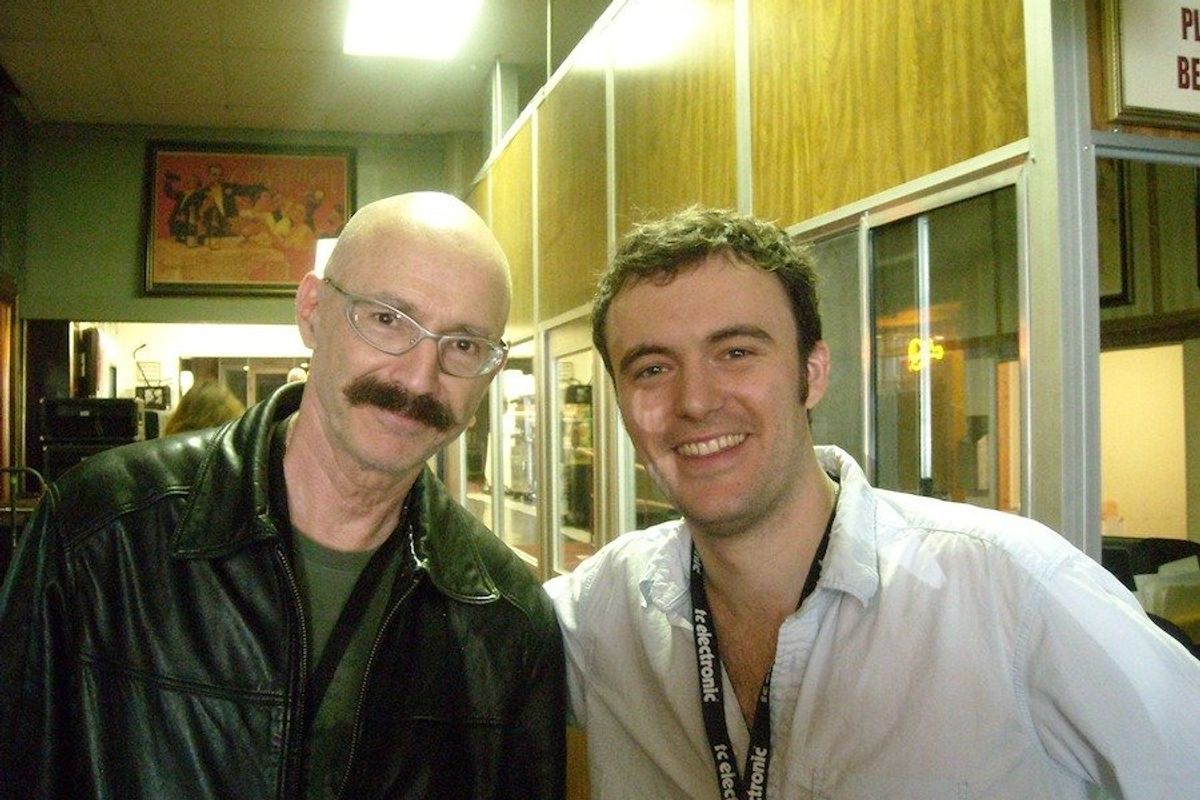
When the call came, our columnist was ready.
Perhaps, like me, you’re a fan of Tony Levin—maybe even a fan of King Crimson, Peter Gabriel, John Lennon, Paul Simon, or any of the hundreds of major artists whose albums Tony has contributed bass to. He’s the bassist on Paul Simon’s “50 Ways to Leave Your Lover,” for instance, which is a song I’ve not only listened to literally thousands of times, but one with a bass tone that is hugely influential on my sound.
So when I got an email recently asking me to fill in for Tony in Stick Men, a co-led project he has with Pat Mastelotto (Mr. Mister/King Crimson) and Markus Reuter, you might imagine there was some shock and excitement going on in my brain—feelings that had to be tamed very quickly in order to do the best job I could: literally playing Tony’s bass and Chapman Stick parts in his own band.
The initial focus was on transcribing and learning the music in a very short amount of time. The call came on Monday night, and by the time I got the song list it was Tuesday—with the only rehearsal on Thursday morning at 10 a.m. We got to chug through the tunes a few times for a couple of hours in the studio, and then the first show was Friday.
My process for learning material that isn’t charted is to immerse myself in it for as long as possible. The longer I listen, the easier it becomes to learn the notes and the forms.
This time around, I didn’t have that luxury, so the process was heavily weighted toward doing the fastest and most accurate transcription work on each song, and making detailed notes about form along the way. The music is incredibly complex and very specific in places, and even after the gigs had started—through the six shows we played over three nights—I was getting notes from Markus and Pat about where we could improve, make little tweaks, and make the show better.
“You have to summon all the experience and confidence you have to keep a level head and not let the situation get the better of you.”
I found the big key was having to maintain my huge respect for Tony and for the music while trying to put aside the “hero” aspect of how he fits into my life. I didn’t have any kind of personal relationship with Tony up until this point. We’d only met a couple of times over the years. The photo that accompanies this story is from 2011, I believe, at S.I.R. Studios in Los Angeles.
But as an influence and a presence in my playing, he’s kind of been there the whole time I’ve been a bass player. To suddenly be sitting in the seat of one of your heroes can bring in some thoughts that might not serve you that well when it comes to giving the music 100 percent of your focus.
There was also this added challenge not often encountered by bass players, where I had to play a significant amount of melodic and upper-register material. This is due to Tony playing a Chapman Stick in the band, and the concept between Tony and Markus being that either of them can play melody or bass parts and trade off at any time.
Effects were a huge part of the success of the gig, and it took almost as much time to build the pedalboard as it did to learn the music.
Even after locking in what I thought would work for the shows—and falling in love with one of my old Sovtek Big Muffs all over again—I came back from the rehearsal and threw the Big Muff in a parallel loop because it was draining a little too much of the low end when I got in the room with the band. That’s a huge part of effects that I don’t think we give enough attention to. We work so long dialing in sounds at home or in the studio, but the reality of the gig—and the changing conditions from night to night and stage to stage—is always so different from that controlled home setup.
So, I learned three big things from this incredible experience:
- You never know when the call is going to come, and you need to be ready at all times.
- You have to summon all the experience and confidence you have to keep a level head and not let the situation get the better of you.
- Never commit to a signal chain in the pedalboard until you’ve heard all the sounds in the live context of the band you’re playing with.


